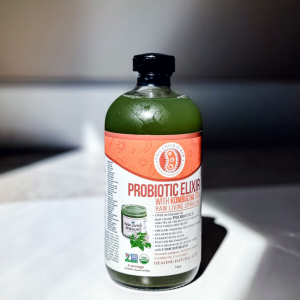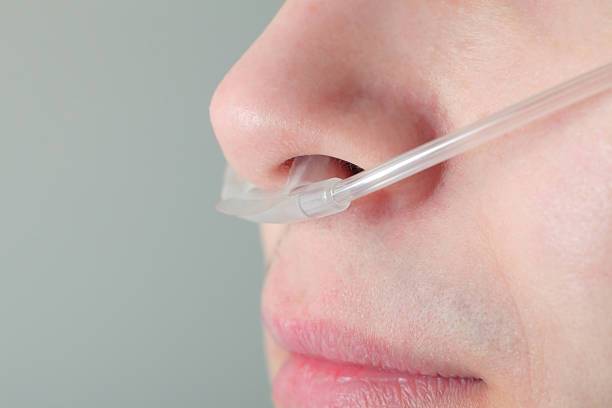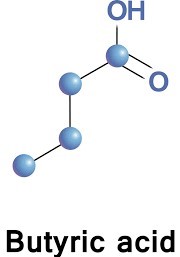
BUTYRIC ACID
 “Butyric acid is a vital fatty acid produced when the good bacteria in the gut break down dietary fibre. It is naturally found in animal fats and vegetable oils, however, the quantity of butyric acid found in food sources is less compared to the amount produced in the gut.
“Butyric acid is a vital fatty acid produced when the good bacteria in the gut break down dietary fibre. It is naturally found in animal fats and vegetable oils, however, the quantity of butyric acid found in food sources is less compared to the amount produced in the gut.
What is Butyric Acid?
Butyric acid is known as a short-chain fatty acid (SCFA), which is one among the three most common SCFA’s in the gut, along with acetic acid and propionic acid. These saturated fatty acids comprise about 90-95 % of the SCFAs in the gut that is produced when gut-friendly bacteria break down dietary fibre. Butyric acid is well-known to support digestive health, reduce inflammation and lowers the risk of diseases and promote overall health. It holds a significant role in providing colon cells with the needed energy to carry out its normal functions and also regulates blood sugar and cholesterol levels. It goes by other names such as butyrate and butanoic acid.
Incredible Health Benefits Of Butyric Acids
Fuels Gut
Butyric acid serves as a chief source of energy for colon cells, which make up the lining of the intestine. While most of the body cells utilise glucose as the main source of energy, the colon cells lining gut chiefly use butyrate, without butyrate these cells are unable to perform normal functions. The short-chain fatty acids offer an oxygen-free environment that supports the growth of gut microbes that controls inflammation and maintain gut cells healthy.
Also Read: Prebiotics: 5 Awesome Foods That Uphold Gut Health-Infographic
Potent Antioxidant Effects
Butyrate guards the cells against detrimental substances to keep gut healthy and disease-free. A colon is a storage place of the waster products. Higher levels of butyrate have shown to increase levels of glutathione, an antioxidants made in the system which neutralises free radicals in the gut. This improves the barrier function of the colonocytes and lowers the risk of bowel cancer, inflammatory bowel disease (IBD), and irritable bowel syndrome (IBS).
Prevents Cancer
Regular intake of high fibre diet increases the amount of butyric acid produced in the gut which is well-known to reduce the risk of colon cancer. Studies have proven that butyric acid is a potential to prevent and treat colon cancer by blocking the growth of colorectal tumour cells. Moreover, it also leads to apoptosis that stops the growth of cancer cells completely.
Manages Diabetes
Studies show that butyrate stimulates the secretion of gut hormones such as glucagon –like-peptide -1(GLP-1) and peptide YY (PYY).GLP-1 hormones increase insulin secretion and lower the production of glucagon in the pancreas. While the PYY hormones promote the uptake of glucose in muscles and fatty tissue. Thus the presence of butyric acid increases the secretion of gut hormones that regulate type 2 diabetes and control weight
Boosts Brain Health
Butyric acid plays a key role in promoting neuroprotective effects that trigger brain and nervous system function. Butyrate targets several pathways linked with the progression of neurodegenerative diseases like Parkinson’s, Alzheimer’s stroke and autism. A diet abundant in butyric acid is an effective way to improve disease outcomes and uplift overall health.
Food Sources Rich In Butyric Acid
Generally, most of the butyric acid in the body is made from the gut bacteria.”- netmeds.com February 02, 2021
BUTYRIC ACID

“Butyric acid is a vital fatty acid produced when the good bacteria in the gut break down dietary fibre. It is naturally found in animal fats and vegetable oils, however, the quantity of butyric acid found in food sources is less compared to the amount produced in the gut.
What is Butyric Acid?
Butyric acid is known as a short-chain fatty acid (SCFA), which is one among the three most common SCFA’s in the gut, along with acetic acid and propionic acid. These saturated fatty acids comprise about 90-95 % of the SCFAs in the gut that is produced when gut-friendly bacteria break down dietary fibre. Butyric acid is well-known to support digestive health, reduce inflammation and lowers the risk of diseases and promote overall health. It holds a significant role in providing colon cells with the needed energy to carry out its normal functions and also regulates blood sugar and cholesterol levels. It goes by other names such as butyrate and butanoic acid.
Incredible Health Benefits Of Butyric Acids
Fuels Gut
Butyric acid serves as a chief source of energy for colon cells, which make up the lining of the intestine. While most of the body cells utilise glucose as the main source of energy, the colon cells lining gut chiefly use butyrate, without butyrate these cells are unable to perform normal functions. The short-chain fatty acids offer an oxygen-free environment that supports the growth of gut microbes that controls inflammation and maintain gut cells healthy.
Also Read: Prebiotics: 5 Awesome Foods That Uphold Gut Health-Infographic
Potent Antioxidant Effects
Butyrate guards the cells against detrimental substances to keep gut healthy and disease-free. A colon is a storage place of the waster products. Higher levels of butyrate have shown to increase levels of glutathione, an antioxidants made in the system which neutralises free radicals in the gut. This improves the barrier function of the colonocytes and lowers the risk of bowel cancer, inflammatory bowel disease (IBD), and irritable bowel syndrome (IBS).
Prevents Cancer
Regular intake of high fibre diet increases the amount of butyric acid produced in the gut which is well-known to reduce the risk of colon cancer. Studies have proven that butyric acid is a potential to prevent and treat colon cancer by blocking the growth of colorectal tumour cells. Moreover, it also leads to apoptosis that stops the growth of cancer cells completely.
Manages Diabetes
Studies show that butyrate stimulates the secretion of gut hormones such as glucagon –like-peptide -1(GLP-1) and peptide YY (PYY).GLP-1 hormones increase insulin secretion and lower the production of glucagon in the pancreas. While the PYY hormones promote the uptake of glucose in muscles and fatty tissue. Thus the presence of butyric acid increases the secretion of gut hormones that regulate type 2 diabetes and control weight
Boosts Brain Health
Butyric acid plays a key role in promoting neuroprotective effects that trigger brain and nervous system function. Butyrate targets several pathways linked with the progression of neurodegenerative diseases like Parkinson’s, Alzheimer’s stroke and autism. A diet abundant in butyric acid is an effective way to improve disease outcomes and uplift overall health.
Food Sources Rich In Butyric Acid
Generally, most of the butyric acid in the body is made from the gut bacteria.”- netmeds.com February 02, 2021
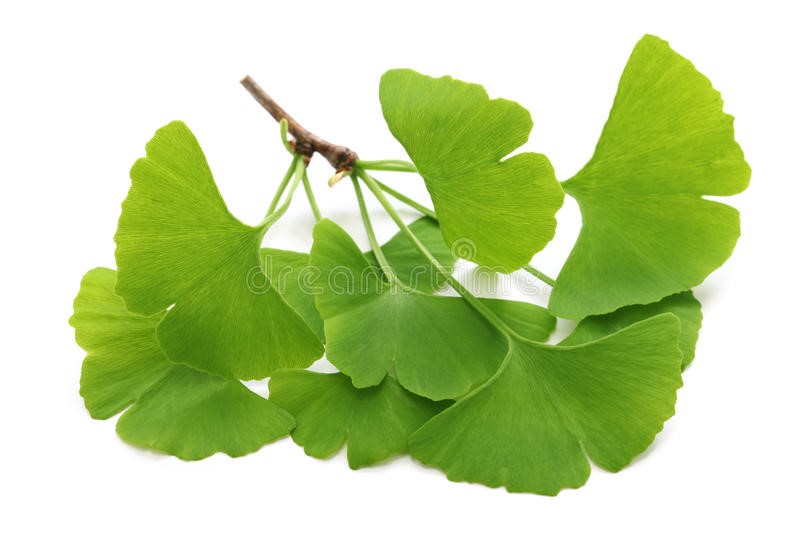
GINKGO BILOBA
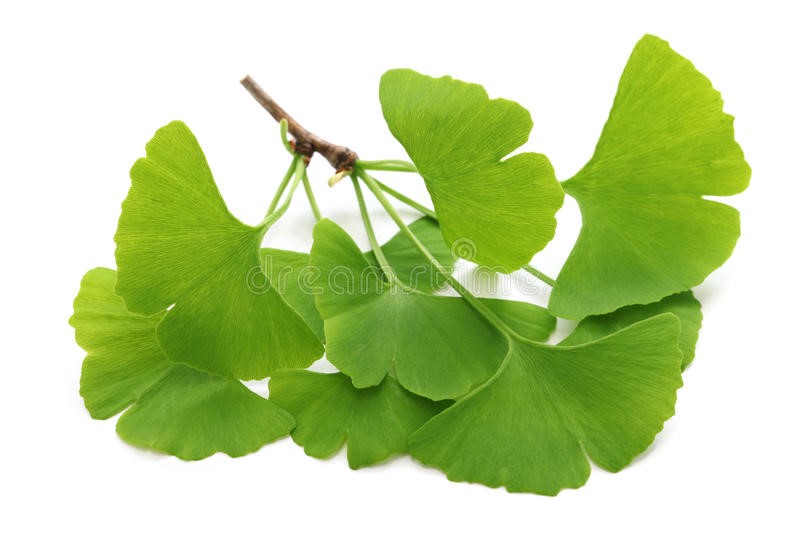
- “Ginkgo biloba, or maidenhair, is a tree native to China that has been grown for thousands of years for a variety of uses. Because it’s the only surviving member of an ancient order of plants, it’s sometimes referred to as a living fossil. While its leaves and seeds are often used in traditional Chinese medicine, modern research primarily focuses on ginkgo extract, which is made from the leaves.
Ginkgo supplements are associated with several health claims and uses, most of which focus on brain function and blood circulation.
Here are 12 benefits of ginkgo biloba.
- Contains Powerful Antioxidants
Ginkgo’s antioxidant content may be the reason behind many of its health claims (1Trusted Source, 2Trusted Source).
Ginkgo contains high levels of flavonoids and terpenoids, which are compounds known for their strong antioxidant effects (3, 4Trusted Source).
Antioxidants combat or neutralize the damaging effects of free radicals.
Free radicals are highly reactive particles that are produced in the body during normal metabolic functions, such as converting food to energy or detoxification.
Yet, they also have the potential to damage healthy tissues, contributing to accelerated aging and disease development.
Research on ginkgo’s antioxidant effects is promising. However, it remains unclear exactly how it works and how effective it may be at treating specific diseases.
· Can Help Fight Inflammation
Inflammation is part of the body’s natural response to injury or invasion by a foreign substance.
In the inflammatory response, various components of the immune system are recruited to fight against the foreign invader or heal the injured area.
Some chronic diseases trigger an inflammatory response even when there is no illness or injury present. Over time, this excessive inflammation can cause permanent damage to the body’s tissues and DNA.
Years of animal and test-tube research shows that ginkgo extract can reduce markers of inflammation in both human and animal cells in a variety of disease states (2Trusted Source, 5Trusted Source, 6Trusted Source).
Some specific conditions in which ginkgo extract has shown to reduce inflammation include:
- Arthritis
- Irritable bowel disease (IBD)
- Cancer
- Heart disease
- Stroke
While this data is encouraging, human studies are needed before drawing concrete conclusions about ginkgo’s role in treating these complex diseases.
· Improves Circulation and Heart Health
In traditional Chinese medicine, ginkgo seeds were used to open “channels” of energy to different organ systems, including the kidneys, liver, brain and lungs.
Ginkgo’s apparent ability to increase blood flow to various parts of the body may be the origin of many of its supposed benefits.”- Healthline.com
GINKGO BILOBA
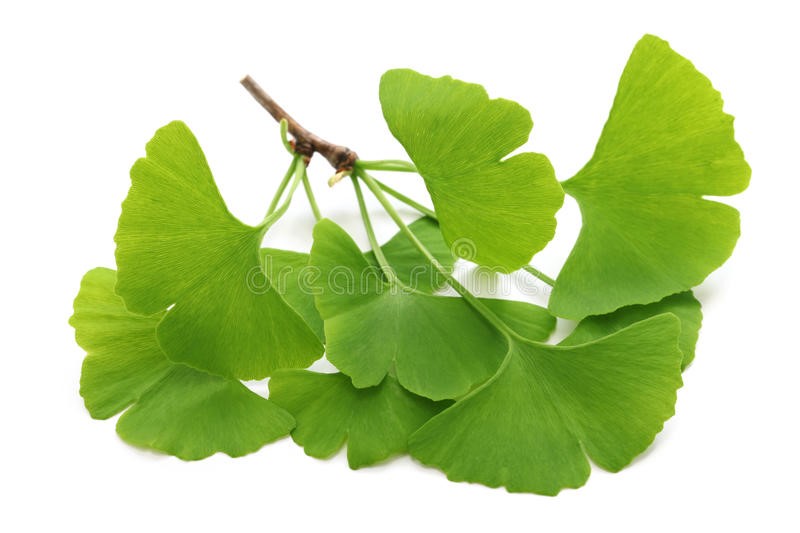
- “Ginkgo biloba, or maidenhair, is a tree native to China that has been grown for thousands of years for a variety of uses. Because it’s the only surviving member of an ancient order of plants, it’s sometimes referred to as a living fossil. While its leaves and seeds are often used in traditional Chinese medicine, modern research primarily focuses on ginkgo extract, which is made from the leaves.
Ginkgo supplements are associated with several health claims and uses, most of which focus on brain function and blood circulation.
Here are 12 benefits of ginkgo biloba.
- Contains Powerful Antioxidants
Ginkgo’s antioxidant content may be the reason behind many of its health claims (1Trusted Source, 2Trusted Source).
Ginkgo contains high levels of flavonoids and terpenoids, which are compounds known for their strong antioxidant effects (3, 4Trusted Source).
Antioxidants combat or neutralize the damaging effects of free radicals.
Free radicals are highly reactive particles that are produced in the body during normal metabolic functions, such as converting food to energy or detoxification.
Yet, they also have the potential to damage healthy tissues, contributing to accelerated aging and disease development.
Research on ginkgo’s antioxidant effects is promising. However, it remains unclear exactly how it works and how effective it may be at treating specific diseases.
· Can Help Fight Inflammation
Inflammation is part of the body’s natural response to injury or invasion by a foreign substance.
In the inflammatory response, various components of the immune system are recruited to fight against the foreign invader or heal the injured area.
Some chronic diseases trigger an inflammatory response even when there is no illness or injury present. Over time, this excessive inflammation can cause permanent damage to the body’s tissues and DNA.
Years of animal and test-tube research shows that ginkgo extract can reduce markers of inflammation in both human and animal cells in a variety of disease states (2Trusted Source, 5Trusted Source, 6Trusted Source).
Some specific conditions in which ginkgo extract has shown to reduce inflammation include:
- Arthritis
- Irritable bowel disease (IBD)
- Cancer
- Heart disease
- Stroke
While this data is encouraging, human studies are needed before drawing concrete conclusions about ginkgo’s role in treating these complex diseases.
· Improves Circulation and Heart Health
In traditional Chinese medicine, ginkgo seeds were used to open “channels” of energy to different organ systems, including the kidneys, liver, brain and lungs.
Ginkgo’s apparent ability to increase blood flow to various parts of the body may be the origin of many of its supposed benefits.”- Healthline.com
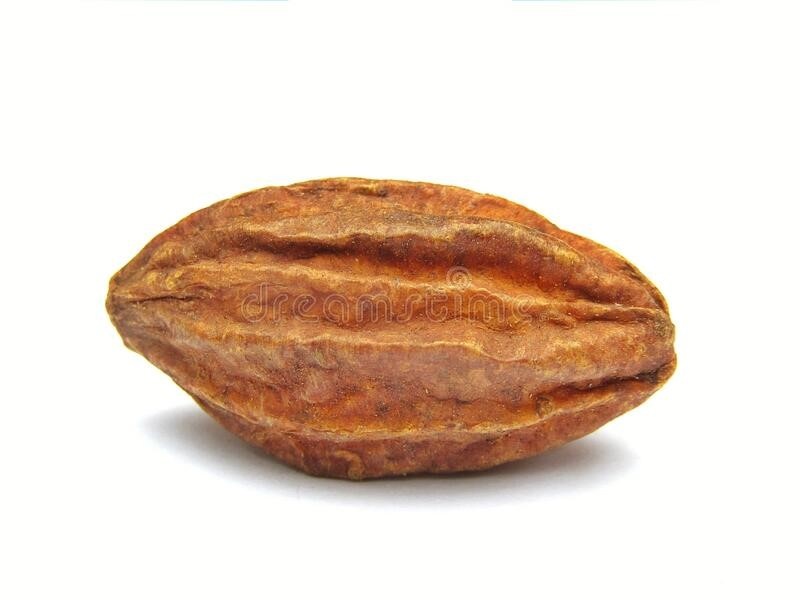
HARITAKI HERB

“Health Benefits of Haritaki
Promotes Digestion
Being a potent digestive, haritaki is enormously beneficial in improving the digestive functions of the body by increasing the absorption of essential nutrients from the food. The powdered fruit also has a mild laxative effect on the body and hence treats constipation by decreasing flatulence, cleansing the intestines and removing waste products from the body. It is also extremely effective in reducing stomach acidity and minimalizing the chances of various stomach ulcers.
Enhances Weight Loss
Addition of this herb to your daily diet not only improves digestion but also plays a key role in reducing obesity. It effectively detoxifies the body by removing AMA toxins and reduces sudden hunger pangs and a craving for unhealthy dietary choices. A glass of warm water infused with haritaki powder and honey not only sheds away the fat deposits but also energizes the body and promotes longevity.
Manages Diabetes
Several scientific researches strongly advocate the use of haritaki for managing diabetes and keeping the blood sugar levels under control. The production of insulin from the pancreatic β-cells become active on consumption of the haritaki powder. It also helps to reduce the breakdown of starch into glucose which in turn regulates the secretion of insulin and leads to low blood glucose level.
Improves Oral Hygiene
Haritaki is traditionally used as a mouthwash for treating and curing various problems related to oral hygiene like gum disease, mouth ulcers, oral sores. The potent anti-bacterial nature of this herb makes it highly significant in alleviating bacterial invasion from the oral cavities thereby preventing cavities and tooth decay.
Good For Skin And Hair
The excellent antibacterial and antioxidative nature of this powerful herb promotes overall skin and hair health and is strongly advised for various skin infections like acne, pimples, rashes, boils etc. It is also useful in treating scalp infections like dandruff, itching and hair fall. Application of haritaki paste on the affected area can speed up wound healing and cure acne and pimples and also prevent further breakouts.
Effect On Doshas
The miraculous herb balances all the three doshas mainly Vata (i.e. air), Pitta (i.e. digestion) and Kapha (i.e. earth and water).
Adverse Effects
Although, haritaki is extremely beneficial for the health and has a host of therapeutic benefits, overconsumption or consuming without consultation with an ayurvedic doctor or healer might cause dehydration, diarrhea, fatigue or leave a prolonged bitter after taste. Hence, it is always advisable to consult a doctor before consuming haritaki supplements or using the powder regularly.”- Netmeds.com
HARITAKI HERB

“Health Benefits of Haritaki
Promotes Digestion
Being a potent digestive, haritaki is enormously beneficial in improving the digestive functions of the body by increasing the absorption of essential nutrients from the food. The powdered fruit also has a mild laxative effect on the body and hence treats constipation by decreasing flatulence, cleansing the intestines and removing waste products from the body. It is also extremely effective in reducing stomach acidity and minimalizing the chances of various stomach ulcers.
Enhances Weight Loss
Addition of this herb to your daily diet not only improves digestion but also plays a key role in reducing obesity. It effectively detoxifies the body by removing AMA toxins and reduces sudden hunger pangs and a craving for unhealthy dietary choices. A glass of warm water infused with haritaki powder and honey not only sheds away the fat deposits but also energizes the body and promotes longevity.
Manages Diabetes
Several scientific researches strongly advocate the use of haritaki for managing diabetes and keeping the blood sugar levels under control. The production of insulin from the pancreatic β-cells become active on consumption of the haritaki powder. It also helps to reduce the breakdown of starch into glucose which in turn regulates the secretion of insulin and leads to low blood glucose level.
Improves Oral Hygiene
Haritaki is traditionally used as a mouthwash for treating and curing various problems related to oral hygiene like gum disease, mouth ulcers, oral sores. The potent anti-bacterial nature of this herb makes it highly significant in alleviating bacterial invasion from the oral cavities thereby preventing cavities and tooth decay.
Good For Skin And Hair
The excellent antibacterial and antioxidative nature of this powerful herb promotes overall skin and hair health and is strongly advised for various skin infections like acne, pimples, rashes, boils etc. It is also useful in treating scalp infections like dandruff, itching and hair fall. Application of haritaki paste on the affected area can speed up wound healing and cure acne and pimples and also prevent further breakouts.
Effect On Doshas
The miraculous herb balances all the three doshas mainly Vata (i.e. air), Pitta (i.e. digestion) and Kapha (i.e. earth and water).
Adverse Effects
Although, haritaki is extremely beneficial for the health and has a host of therapeutic benefits, overconsumption or consuming without consultation with an ayurvedic doctor or healer might cause dehydration, diarrhea, fatigue or leave a prolonged bitter after taste. Hence, it is always advisable to consult a doctor before consuming haritaki supplements or using the powder regularly.”- Netmeds.com
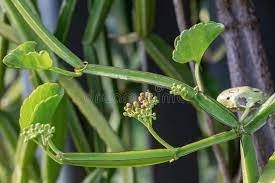
ASTHISAMHARAKA

Bone Health
“Cissus quadrangularis shows promise in the prevention of osteoporosis, suggests a 2011 study published in La Clinica Terapeutica. The study involved mice that were given either the osteoporosis drug raloxifene or a combination of raloxifene and a CQ extract.
While there were no significant changes in blood calcium levels after one month, the rats that were given raloxifene and the CQ extract had greater increases in cortical bone (the hard exterior portion of bone) and trabecular bone (the “spongy” interior bone) than those given raloxifene only.
In a related study published in the Journal of Cellular Biochemistry, scientists reported that human bone cells exposed to CQ in the test tube had an accelerated production of osteoblasts (the cells responsible for new bone formation).
Despite some positive findings, there has yet to be any evidence that the administration of CQ can speed bone healing or aid in the repair of bone fractures.
Joint Pain and Arthritis
Cissus quadrangularis is believed to have anti-inflammatory properties that help relieve joint pain. Researchers from the University of Memphis tested the hypothesis in 29 young, healthy men who reported chronic joint pain as a result of strenuous exercise.
After receiving 3,200 milligrams (mg) of a CQ supplement daily for eight weeks, the men reported a subjective decrease in joint pain, swelling, and stiffness (although no clinical changes were noted). The conclusions were limited by the lack of a placebo control group and the small sample size.
A similar study in rats, published in the Journal of Ethnopharmacology, found that an alcohol-based CQ extract reduced levels of tumor necrosis factor-alpha (TNF-a), an inflammatory cytokine associated with rheumatoid arthritis and osteoarthritis.
Test tube studies have also suggested that CQ can inhibit cyclooxygenase 1 and cyclooxygenase 2 (better known as COX-1 and COX-2) enzymes in the same way that many anti-inflammatory drugs do.
Whether these effects are robust enough to provide arthritis relief in humans has yet to be proven.”- Verywellhealth.com
ASTHISAMHARAKA

Bone Health
“Cissus quadrangularis shows promise in the prevention of osteoporosis, suggests a 2011 study published in La Clinica Terapeutica. The study involved mice that were given either the osteoporosis drug raloxifene or a combination of raloxifene and a CQ extract.
While there were no significant changes in blood calcium levels after one month, the rats that were given raloxifene and the CQ extract had greater increases in cortical bone (the hard exterior portion of bone) and trabecular bone (the “spongy” interior bone) than those given raloxifene only.
In a related study published in the Journal of Cellular Biochemistry, scientists reported that human bone cells exposed to CQ in the test tube had an accelerated production of osteoblasts (the cells responsible for new bone formation).
Despite some positive findings, there has yet to be any evidence that the administration of CQ can speed bone healing or aid in the repair of bone fractures.
Joint Pain and Arthritis
Cissus quadrangularis is believed to have anti-inflammatory properties that help relieve joint pain. Researchers from the University of Memphis tested the hypothesis in 29 young, healthy men who reported chronic joint pain as a result of strenuous exercise.
After receiving 3,200 milligrams (mg) of a CQ supplement daily for eight weeks, the men reported a subjective decrease in joint pain, swelling, and stiffness (although no clinical changes were noted). The conclusions were limited by the lack of a placebo control group and the small sample size.
A similar study in rats, published in the Journal of Ethnopharmacology, found that an alcohol-based CQ extract reduced levels of tumor necrosis factor-alpha (TNF-a), an inflammatory cytokine associated with rheumatoid arthritis and osteoarthritis.
Test tube studies have also suggested that CQ can inhibit cyclooxygenase 1 and cyclooxygenase 2 (better known as COX-1 and COX-2) enzymes in the same way that many anti-inflammatory drugs do.
Whether these effects are robust enough to provide arthritis relief in humans has yet to be proven.”- Verywellhealth.com
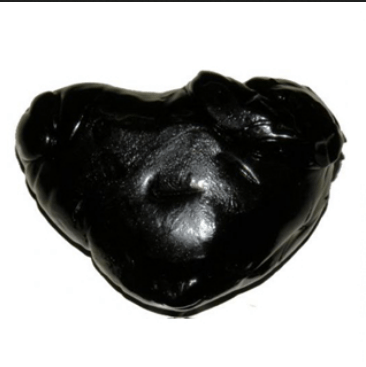
SHILAJIT

Shilajit is a sticky substance found primarily in the rocks of the Himalayas. It develops over centuries from the slow decomposition of plants.
Shilajit is commonly used in ayurvedic medicine. It’s an effective and safe supplement that can have a positive effect on your overall health and well-being.
Here’s a look at eight ways to use shilajit.
· “Alzheimer’s disease
Alzheimer’s disease is a progressive brain disorder that causes problems with memory, behavior, and thinking. Drug treatments are available to improve symptoms of Alzheimer’s. But based on the molecular composition of shilajit, some researchers believe shilajit may prevent or slowTrusted Source the progression of Alzheimer’s.
The primary component of shilajit is an antioxidant known as fulvic acid. This powerful antioxidant contributes to cognitive health by preventing the accumulation of tau protein. Tau proteins are an important part of your nervous system, but a buildup can trigger brain cell damage.
Researchers think that the fulvic acid in shilajit may stop the abnormal buildup of tau protein and reduce inflammation, potentially improving Alzheimer’s symptoms. However, more research and clinical trials are needed.
· Low testosterone level
Testosterone is a primary male sex hormone, but some men have a lower level than others. Signs of low testosterone include:
- a low sex drive
- hair loss
- loss of muscle mass
- fatigue
- increased body fat
In one clinical studyTrusted Source of male volunteers between the ages of 45 and 55, half of the participants were given a placebo and half were given a 250 milligram (mg) dose of purified shilajit twice a day. After 90 consecutive days, the study found that participants receiving purified shilajit had a significantly higher testosterone level compared to the placebo group.
· Chronic fatigue syndrome
Chronic fatigue syndrome (CFS) is a long-term condition that causes extreme tiredness or fatigue. CFS can make it difficult to go to work or school, and simple everyday activities can prove challenging. Researchers think that shilajit supplements may reduce symptoms of CFS and restore energy.
CFS has been associated with mitochondrial dysfunction. This occurs when your cells don’t produce enough energy. In a study from 2012, researchers gave lab rats shilajit for 21 days, and then induced CFS by forcing the rats to swim 15 minutes for 21 consecutive days. The results found that shilajit helped reduce the effects of CFS. They think this was the result of the shilajit helping to prevent mitochondrial dysfunction.
Based on these results, naturally boosting your body’s mitochondrial function with shilajit supplements may help improve energy levels.
· Aging
Since shilajit is rich in fulvic acid, a strong antioxidant and anti-inflammatory, it may also protect against free radicals and cellular damage. As a result, regular use of shilajit may contributeTrusted Source to longevity, a slower aging process, and overall better health.
· High altitude sickness
A higher altitude can trigger a range of symptoms, including:
- pulmonary edema
- insomnia
- lethargy, or feeling tired or sluggish
- body pain
- dementia
- hypoxia”- Healthline.com Last medically reviewed on March 15, 2017
SHILAJIT

Shilajit is a sticky substance found primarily in the rocks of the Himalayas. It develops over centuries from the slow decomposition of plants.
Shilajit is commonly used in ayurvedic medicine. It’s an effective and safe supplement that can have a positive effect on your overall health and well-being.
Here’s a look at eight ways to use shilajit.
· “Alzheimer’s disease
Alzheimer’s disease is a progressive brain disorder that causes problems with memory, behavior, and thinking. Drug treatments are available to improve symptoms of Alzheimer’s. But based on the molecular composition of shilajit, some researchers believe shilajit may prevent or slowTrusted Source the progression of Alzheimer’s.
The primary component of shilajit is an antioxidant known as fulvic acid. This powerful antioxidant contributes to cognitive health by preventing the accumulation of tau protein. Tau proteins are an important part of your nervous system, but a buildup can trigger brain cell damage.
Researchers think that the fulvic acid in shilajit may stop the abnormal buildup of tau protein and reduce inflammation, potentially improving Alzheimer’s symptoms. However, more research and clinical trials are needed.
· Low testosterone level
Testosterone is a primary male sex hormone, but some men have a lower level than others. Signs of low testosterone include:
- a low sex drive
- hair loss
- loss of muscle mass
- fatigue
- increased body fat
In one clinical studyTrusted Source of male volunteers between the ages of 45 and 55, half of the participants were given a placebo and half were given a 250 milligram (mg) dose of purified shilajit twice a day. After 90 consecutive days, the study found that participants receiving purified shilajit had a significantly higher testosterone level compared to the placebo group.
· Chronic fatigue syndrome
Chronic fatigue syndrome (CFS) is a long-term condition that causes extreme tiredness or fatigue. CFS can make it difficult to go to work or school, and simple everyday activities can prove challenging. Researchers think that shilajit supplements may reduce symptoms of CFS and restore energy.
CFS has been associated with mitochondrial dysfunction. This occurs when your cells don’t produce enough energy. In a study from 2012, researchers gave lab rats shilajit for 21 days, and then induced CFS by forcing the rats to swim 15 minutes for 21 consecutive days. The results found that shilajit helped reduce the effects of CFS. They think this was the result of the shilajit helping to prevent mitochondrial dysfunction.
Based on these results, naturally boosting your body’s mitochondrial function with shilajit supplements may help improve energy levels.
· Aging
Since shilajit is rich in fulvic acid, a strong antioxidant and anti-inflammatory, it may also protect against free radicals and cellular damage. As a result, regular use of shilajit may contributeTrusted Source to longevity, a slower aging process, and overall better health.
· High altitude sickness
A higher altitude can trigger a range of symptoms, including:
- pulmonary edema
- insomnia
- lethargy, or feeling tired or sluggish
- body pain
- dementia
- hypoxia”- Healthline.com Last medically reviewed on March 15, 2017
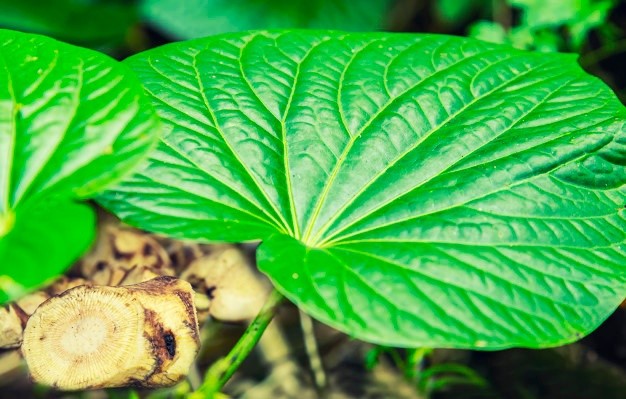
KAVA KAVA

Kava has been used to treat a number of conditions, including:
- Anxiety — including generalized anxiety disorder (GAD)
- Stress
- Trouble sleeping
- Premenstrual syndrome (PMS) — the physical and emotional symptoms that come before a woman’s period
KAVA KAVA

Kava has been used to treat a number of conditions, including:
- Anxiety — including generalized anxiety disorder (GAD)
- Stress
- Trouble sleeping
- Premenstrual syndrome (PMS) — the physical and emotional symptoms that come before a woman’s period
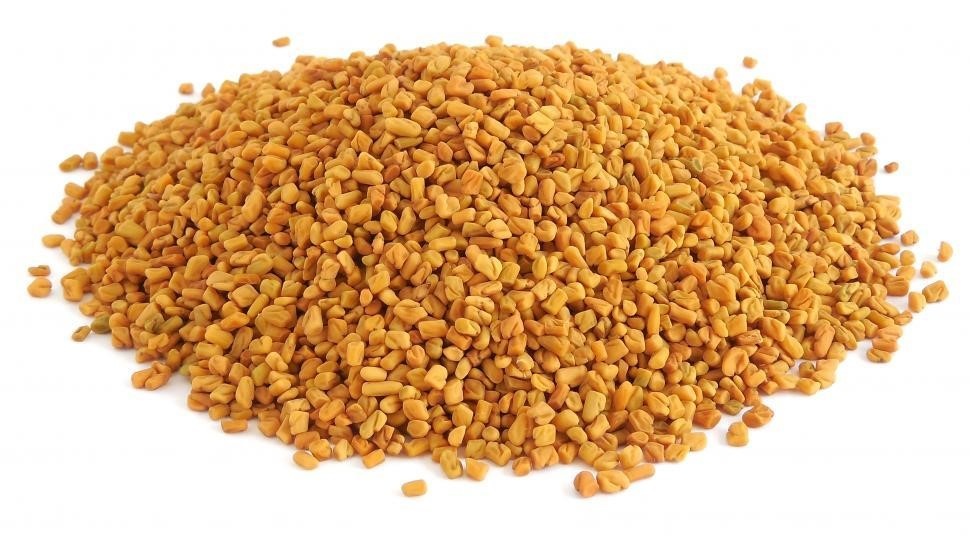
FENUGREEK
“One of the most common reasons men use fenugreek supplements is to boost testosterone.
Some studies have found that it has beneficial effects, including an increased libido.
In an 8-week study, 30 college-aged men performed 4 sessions of weightlifting per week, with half of them receiving 500 mg of fenugreek per day (7Trusted Source).
Although the non-supplement group experienced a slight decline in testosterone, the fenugreek group showed an increase. This group also had a 2% reduction in body fat (7Trusted Source).
One 6-week study provided 30 men with 600 mg of fenugreek extract to assess changes in sexual function and libido. Most participants reported increased strength and improved sexual function (8Trusted Source).
May help control diabetes and blood sugar levels
Fenugreek may aid metabolic conditions, such as diabetes.
It seems to affect both types 1 and 2 diabetes, along with increasing general carb tolerance in people without these conditions (9Trusted Source, 10Trusted Source, 11Trusted Source).
In another study, people without diabetes took fenugreek. They experienced a 13.4% reduction in blood sugar levels 4 hours after intake (13Trusted Source).
These benefits may be due to fenugreek’s role in improving insulin function. That said, the effects seen in studies using whole fenugreek powder or seeds may be partly due to the high fiber content (14Trusted Source).” -Healthline.com
FENUGREEK
“One of the most common reasons men use fenugreek supplements is to boost testosterone.
Some studies have found that it has beneficial effects, including an increased libido.
In an 8-week study, 30 college-aged men performed 4 sessions of weightlifting per week, with half of them receiving 500 mg of fenugreek per day (7Trusted Source).
Although the non-supplement group experienced a slight decline in testosterone, the fenugreek group showed an increase. This group also had a 2% reduction in body fat (7Trusted Source).
One 6-week study provided 30 men with 600 mg of fenugreek extract to assess changes in sexual function and libido. Most participants reported increased strength and improved sexual function (8Trusted Source).
May help control diabetes and blood sugar levels
Fenugreek may aid metabolic conditions, such as diabetes.
It seems to affect both types 1 and 2 diabetes, along with increasing general carb tolerance in people without these conditions (9Trusted Source, 10Trusted Source, 11Trusted Source).
In another study, people without diabetes took fenugreek. They experienced a 13.4% reduction in blood sugar levels 4 hours after intake (13Trusted Source).
These benefits may be due to fenugreek’s role in improving insulin function. That said, the effects seen in studies using whole fenugreek powder or seeds may be partly due to the high fiber content (14Trusted Source).” -Healthline.com
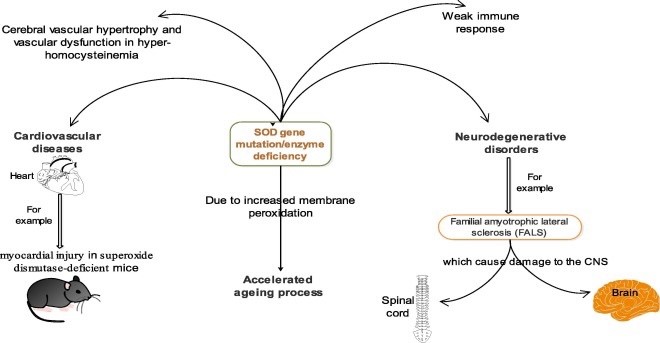
GLUTOTHIONE REDUCTASE, TRANSFERASE, AND GLUTATHIONE PEROXIDASE

Glutothione Reductase and Glutathione Peroxidase
“These are enzymes that have antioxidant effects in biological and biochemical systems. The antioxidant defense system protects the cell against oxidative damage of free radicals or other reactive molecules.”Jan 31, 2020 This is in turn helps to prevent lipid peroxidation and maintain intracellular homeostasis as well as redox balance
First line defense antioxidants
These are a collection of antioxidants that act to suppress or prevent the formation of free radicals or reactive species in cells. They are very fast in neutralizing any molecule with the potential of developing into a free radical or any free radical with the ability to induce the production of other radicals. Three key enzymes: superoxide dismutase, catalaseand glutathione peroxidase are top on the list. These enzymes respectively dismutate superoxide radical, breakdown hydrogen peroxides and hydroperoxides to harmless molecules (H2O2/alcohol and O2). The class also includes metal ion binding proteins like transferrin and caeruloplasmin which chelate or sequester iron and copper respectively, consequently preventing them from free radical formation.
2.2. Second line defense antioxidants
This group of antioxidants is often referred to as scavenging antioxidants. They scavenge active radicals to inhibit chain initiation and break chain propagation reactions. They neutralize or scavenge free radicals by donating electron to them, and in the process become free radicals themselves but of lesser damaging effects. These ‘new radicals’ are easily neutralized and made completely harmless by other antioxidants in this group. Most antioxidants including ascorbic acid, uric acid, glutathione, which are hydrophilic and alpha tocopherol (vitamin E) and ubiquinol which are lipophilic belong to this category.
2.3. Third line defense antioxidants
This category of antioxidants only comes into play after free radical damage has occurred. They are de novo enzymes which repair the damage caused by free radicals to biomolecules and reconstitute the damaged cell membrane. They are a group of enzymes for repair of damaged DNA, protein and lipids. They also do a sort of ‘clean up duty’, they recognize, breakdown and remove oxidized or damaged proteins, DNA and lipids, to prevent their accumulation which can be toxic to body tissues. Common examples include The DNA repair enzyme systems (polymerases, glycosylases and nucleases), proteolytic enzymes (proteinases, proteases and peptidases) which are located both in cytosol and mitochondria of mammalian cells.
2.4. Fourth line defense antioxidants
The action of these ‘antioxidants’ basically involves an adaptation mechanism in which they utilize the signals required for free radicals production and reaction to prevent the formation or reaction of such free radicals. The signal generated from the free radical formed induces the formation and transport of an appropriate antioxidant to the right site.8
Superoxide dismutase, catalase and glutathione peroxidase are antioxidant enzymes which do not only play fundamental but indispensable role in the antioxidant protective capacity of biological systems against free radical attack. The superoxide radical (∗O2) or singlet oxygen radical (1O2−) generated in tissues through metabolism or reactions in cells is catalytically converted to hydrogen peroxide (H2O2) and molecular oxygen (O2) by superoxide dismutase (SOD). H2O2 when accumulated is toxic to body tissues or cells. Also, in the presence of Fe2+ it is converted to deleterious hydroxyl radical (∗OH) through Fentonreaction. In order to prevent this phenomenon, catalase (another antioxidant enzyme) which is abundant in the peroxisomes breaks down H2O2 into water and molecular oxygen, consequently curtailing free radical-induced damage (Fig. 3). However, catalase is absent in the mitochondria, hence the reduction of H2O2 to water and lipid peroxides to their corresponding alcohols is carried out by Glutathione Peroxidase (GPx). This collective protective effort is termed first line antioxidant defense, and the antioxidants involved are referred to as first line defense antioxidants. The role and effectiveness of the first line defense antioxidants which basically include superoxide dismutase (SOD), catalase (CAT) and glutathione peroxidase (GPX) is therefore important and indispensable in the entire defense strategy of antioxidants, especially in reference to super oxide anion radical (∗O2) which is perpetually generated in normal body metabolism through several processes.
Glutathione peroxidases (GPx, EC 1.11.1.9)
Glutathione Peroxidase (GPx) is an important intracellular enzyme that breakdown hydrogen peroxides (H2O2) to water; and lipid peroxides to their corresponding alcohols mainly in the mitochondria and sometimes in the cytosol.39 Most times, its activity depends on a micronutrient cofactor known as selenium. For this reason, GPX is often referred to as a selenocysteine peroxidase. The enzyme plays a more crucial role of inhibiting lipid peroxidation process, and therefore protects cells from oxidative stress.25
According to Morón and Cortázar, there are at least eight GPx enzymes in human, GPx1–GPx8. The GPx 1–8 genes are mapped to chromosomes 3, 14, 5, 19, 6, 6, 1 and 5 respectively.44 Among the glutathioneperoxidases, GPx1 is the most abundant selenoperoxidase and is present virtually in all cells.45GPx2 is found much more in the gastrointestinal tract primarily in the intestine.46, 47 The kidney relative to other tissues is the primary location for GPx3, though; the enzyme is also present in extracellular fluids as a glycoprotein.48 Most forms of GPx are tetrameric in structure but GPx4 which is often regarded as phospholipid hydroperoxide is a monomer and differ in substrate specificity. This is because Gpx4 is the only GPx enzyme that breaks down phospholipid hydroperoxides. The enzyme also has a mitochondrial isoform that mediates the apoptotic response to oxidative stress49 and has a peroxidase independent structural role in sperm maturation.45, 50 GPx5 from both humans and rodents and Rodent GPx6 differ from other glutathione peroxidases in that their activities are independent of Selenium.51 This invariably implies that these forms of GPx may not be able to effectively scavenge H2O2, a feature which is characteristic of the selenium-dependent glutathione peroxidases.52
The clinical importance of GPx has been underlined by a number of studies. Chabory et al. postulated that individuals with lower GPx activity are predisposed to impaired antioxidant protection, which leads to oxidative damage to membrane fatty acid s and functional proteins (Fig. 5), and by inference, neurotoxic damage.53 Forgione and colleagues had previously hypothesized that GPX1 deficiency directly induces an increase in vascular oxidative stress, with attendant endothelial dysfunction.54 Glutathione peroxidases, particularly GPx1 have also been implicated in the development and prevention of many common and complex diseases, including cancer and cardiovascular disease (Fig. 5).55
- Conclusion
The activities of superoxide dismutase (SOD), catalase(CAT) and glutathione peroxidase (GPX) constitute a first line antioxidant defence system which plays a key and fundamental role in the total defense mechanisms and strategies in biological systems.
GLUTOTHIONE REDUCTASE, TRANSFERASE, AND GLUTATHIONE PEROXIDASE

Glutothione Reductase and Glutathione Peroxidase
“These are enzymes that have antioxidant effects in biological and biochemical systems. The antioxidant defense system protects the cell against oxidative damage of free radicals or other reactive molecules.”Jan 31, 2020 This is in turn helps to prevent lipid peroxidation and maintain intracellular homeostasis as well as redox balance
First line defense antioxidants
These are a collection of antioxidants that act to suppress or prevent the formation of free radicals or reactive species in cells. They are very fast in neutralizing any molecule with the potential of developing into a free radical or any free radical with the ability to induce the production of other radicals. Three key enzymes: superoxide dismutase, catalaseand glutathione peroxidase are top on the list. These enzymes respectively dismutate superoxide radical, breakdown hydrogen peroxides and hydroperoxides to harmless molecules (H2O2/alcohol and O2). The class also includes metal ion binding proteins like transferrin and caeruloplasmin which chelate or sequester iron and copper respectively, consequently preventing them from free radical formation.
2.2. Second line defense antioxidants
This group of antioxidants is often referred to as scavenging antioxidants. They scavenge active radicals to inhibit chain initiation and break chain propagation reactions. They neutralize or scavenge free radicals by donating electron to them, and in the process become free radicals themselves but of lesser damaging effects. These ‘new radicals’ are easily neutralized and made completely harmless by other antioxidants in this group. Most antioxidants including ascorbic acid, uric acid, glutathione, which are hydrophilic and alpha tocopherol (vitamin E) and ubiquinol which are lipophilic belong to this category.
2.3. Third line defense antioxidants
This category of antioxidants only comes into play after free radical damage has occurred. They are de novo enzymes which repair the damage caused by free radicals to biomolecules and reconstitute the damaged cell membrane. They are a group of enzymes for repair of damaged DNA, protein and lipids. They also do a sort of ‘clean up duty’, they recognize, breakdown and remove oxidized or damaged proteins, DNA and lipids, to prevent their accumulation which can be toxic to body tissues. Common examples include The DNA repair enzyme systems (polymerases, glycosylases and nucleases), proteolytic enzymes (proteinases, proteases and peptidases) which are located both in cytosol and mitochondria of mammalian cells.
2.4. Fourth line defense antioxidants
The action of these ‘antioxidants’ basically involves an adaptation mechanism in which they utilize the signals required for free radicals production and reaction to prevent the formation or reaction of such free radicals. The signal generated from the free radical formed induces the formation and transport of an appropriate antioxidant to the right site.8
Superoxide dismutase, catalase and glutathione peroxidase are antioxidant enzymes which do not only play fundamental but indispensable role in the antioxidant protective capacity of biological systems against free radical attack. The superoxide radical (∗O2) or singlet oxygen radical (1O2−) generated in tissues through metabolism or reactions in cells is catalytically converted to hydrogen peroxide (H2O2) and molecular oxygen (O2) by superoxide dismutase (SOD). H2O2 when accumulated is toxic to body tissues or cells. Also, in the presence of Fe2+ it is converted to deleterious hydroxyl radical (∗OH) through Fentonreaction. In order to prevent this phenomenon, catalase (another antioxidant enzyme) which is abundant in the peroxisomes breaks down H2O2 into water and molecular oxygen, consequently curtailing free radical-induced damage (Fig. 3). However, catalase is absent in the mitochondria, hence the reduction of H2O2 to water and lipid peroxides to their corresponding alcohols is carried out by Glutathione Peroxidase (GPx). This collective protective effort is termed first line antioxidant defense, and the antioxidants involved are referred to as first line defense antioxidants. The role and effectiveness of the first line defense antioxidants which basically include superoxide dismutase (SOD), catalase (CAT) and glutathione peroxidase (GPX) is therefore important and indispensable in the entire defense strategy of antioxidants, especially in reference to super oxide anion radical (∗O2) which is perpetually generated in normal body metabolism through several processes.
Glutathione peroxidases (GPx, EC 1.11.1.9)
Glutathione Peroxidase (GPx) is an important intracellular enzyme that breakdown hydrogen peroxides (H2O2) to water; and lipid peroxides to their corresponding alcohols mainly in the mitochondria and sometimes in the cytosol.39 Most times, its activity depends on a micronutrient cofactor known as selenium. For this reason, GPX is often referred to as a selenocysteine peroxidase. The enzyme plays a more crucial role of inhibiting lipid peroxidation process, and therefore protects cells from oxidative stress.25
According to Morón and Cortázar, there are at least eight GPx enzymes in human, GPx1–GPx8. The GPx 1–8 genes are mapped to chromosomes 3, 14, 5, 19, 6, 6, 1 and 5 respectively.44 Among the glutathioneperoxidases, GPx1 is the most abundant selenoperoxidase and is present virtually in all cells.45GPx2 is found much more in the gastrointestinal tract primarily in the intestine.46, 47 The kidney relative to other tissues is the primary location for GPx3, though; the enzyme is also present in extracellular fluids as a glycoprotein.48 Most forms of GPx are tetrameric in structure but GPx4 which is often regarded as phospholipid hydroperoxide is a monomer and differ in substrate specificity. This is because Gpx4 is the only GPx enzyme that breaks down phospholipid hydroperoxides. The enzyme also has a mitochondrial isoform that mediates the apoptotic response to oxidative stress49 and has a peroxidase independent structural role in sperm maturation.45, 50 GPx5 from both humans and rodents and Rodent GPx6 differ from other glutathione peroxidases in that their activities are independent of Selenium.51 This invariably implies that these forms of GPx may not be able to effectively scavenge H2O2, a feature which is characteristic of the selenium-dependent glutathione peroxidases.52
The clinical importance of GPx has been underlined by a number of studies. Chabory et al. postulated that individuals with lower GPx activity are predisposed to impaired antioxidant protection, which leads to oxidative damage to membrane fatty acid s and functional proteins (Fig. 5), and by inference, neurotoxic damage.53 Forgione and colleagues had previously hypothesized that GPX1 deficiency directly induces an increase in vascular oxidative stress, with attendant endothelial dysfunction.54 Glutathione peroxidases, particularly GPx1 have also been implicated in the development and prevention of many common and complex diseases, including cancer and cardiovascular disease (Fig. 5).55
- Conclusion
The activities of superoxide dismutase (SOD), catalase(CAT) and glutathione peroxidase (GPX) constitute a first line antioxidant defence system which plays a key and fundamental role in the total defense mechanisms and strategies in biological systems.
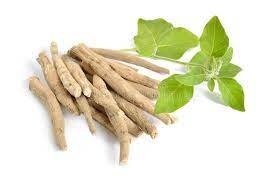
ASHWAGANDHA HERB
 “May lower blood sugar
“May lower blood sugar
Several animal studies suggest that ashwagandha may help lower your blood sugar; there are few human trials on ashwagandha. One small trial found that ashwagandha reduced blood sugar as much as oral diabetes medication in people with type 2 diabetes (Andallu, 2000). Another study showed people taking high-dose ashwagandha had a drop in fasting blood glucose. One theory behind the reduction in blood sugar is that ashwagandha may affect cortisol, which plays a role in regulating blood sugar (Auddy, 2008).
2. Can reduce stress and anxiety
Stress can be emotional, psychological, or physical—regardless of the form, it usually involves cortisol. Among other functions, cortisol is also known as the “stress hormone” because your adrenal glands release it in response to stress.
One study found that a high dose of ashwagandha root extract significantly reduced serum cortisol levels. The study participants also reported that their perceived stress levels diminished, giving them a better quality of life (Chandrasekhar, 2012).
Even without measuring cortisol levels, other studies suggest that ashwagandha may improve stress and anxiety. In one trial, researchers gave high-dose ashwagandha to people with anxiety. Along with other interventions, ashwagandha significantly improved mental health, concentration, energy levels, social functioning, vitality, and overall quality of life (Cooley, 2009)”.- https://ro.co › health-guide
ASHWAGANDHA HERB
 “May lower blood sugar
“May lower blood sugar
Several animal studies suggest that ashwagandha may help lower your blood sugar; there are few human trials on ashwagandha. One small trial found that ashwagandha reduced blood sugar as much as oral diabetes medication in people with type 2 diabetes (Andallu, 2000). Another study showed people taking high-dose ashwagandha had a drop in fasting blood glucose. One theory behind the reduction in blood sugar is that ashwagandha may affect cortisol, which plays a role in regulating blood sugar (Auddy, 2008).
2. Can reduce stress and anxiety
Stress can be emotional, psychological, or physical—regardless of the form, it usually involves cortisol. Among other functions, cortisol is also known as the “stress hormone” because your adrenal glands release it in response to stress.
One study found that a high dose of ashwagandha root extract significantly reduced serum cortisol levels. The study participants also reported that their perceived stress levels diminished, giving them a better quality of life (Chandrasekhar, 2012).
Even without measuring cortisol levels, other studies suggest that ashwagandha may improve stress and anxiety. In one trial, researchers gave high-dose ashwagandha to people with anxiety. Along with other interventions, ashwagandha significantly improved mental health, concentration, energy levels, social functioning, vitality, and overall quality of life (Cooley, 2009)”.- https://ro.co › health-guide
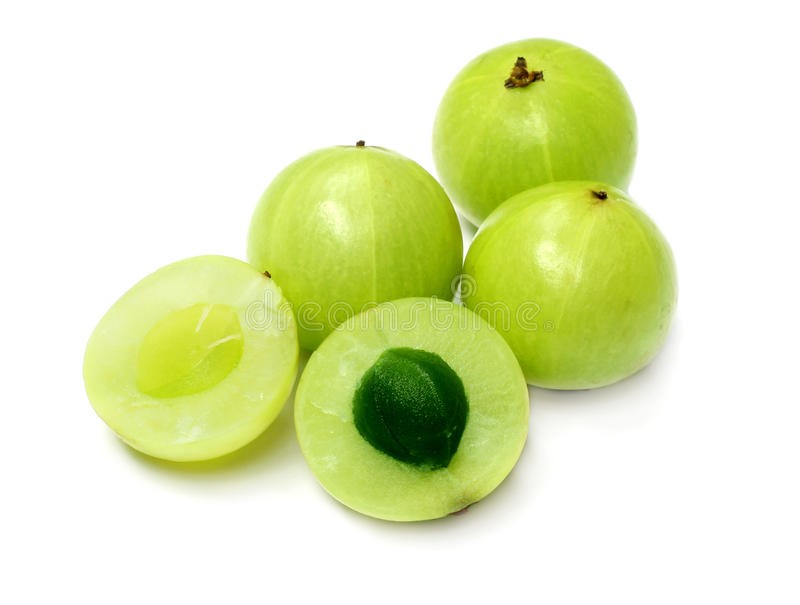
AMLA FRUIT

- Promotes immune function. Amla juice is a great source of vitamin C, which is a water-soluble vitamin that acts as an antioxidant ( 1 ). …
- Enhances liver health. …
- Supports healthy digestion. …
- Promotes heart health. …
- May increase hair growth. …
- Improves kidney health.
AMLA FRUIT

- Promotes immune function. Amla juice is a great source of vitamin C, which is a water-soluble vitamin that acts as an antioxidant ( 1 ). …
- Enhances liver health. …
- Supports healthy digestion. …
- Promotes heart health. …
- May increase hair growth. …
- Improves kidney health.
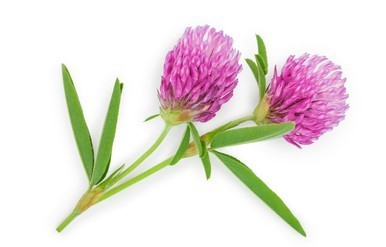
RED CLOVER
AKA Trifolium pratense
“What Is Red Clover Used For?
In alternative medicine, red clover is said to help with the following conditions. Note, however, that research hasn’t shown that the herb is conclusively effective for these or any other health concerns.
Menopausal Symptoms
A number of small studies have been done to see if red clover may help relieve the discomforts of menopause, especially hot flashes. Though you may hear some anecdotal support for this, there has been no conclusive evidence to back it up.
In fact, a research review conducted in 2013 notes that phytoestrogen treatments (including red clover) are not proven to effectively alleviate menopausal symptoms.2
Bone Loss
Research is ongoing as to whether isoflavones lower the loss of bone mineral density in postmenopausal women. Red clover is one source of supplements used in some studies.
A review done in 2016 concluded there may be some beneficial effects on bone health,3 while a 2017 review found that different formulations of red clover may be effective or ineffective.2
Cancer
Preliminary research suggests that red clover may help reduce the risk of prostate cancer. In a 2009 study of prostate cancer cells, scientists found that treatment with red clover led to a decrease in the prostate-specific antigen (PSA), a protein found at elevated levels in men with prostate cancer.4
Heart Disease
A few clinical trials have looked at the effects of red clover on the development of risk factors for heart disease in postmenopausal women, with no strong evidence that it helps, reports Memorial Sloan Kettering Cancer Center.
Keep in mind that, due to the lack of long-term studies, it’s too soon to recommend red clover for any condition. It’s also important to note that self-treating a condition and avoiding or delaying standard care may have serious consequences.”- verywellHealth.com
RED CLOVER

AKA Trifolium pratense
“What Is Red Clover Used For?
In alternative medicine, red clover is said to help with the following conditions. Note, however, that research hasn’t shown that the herb is conclusively effective for these or any other health concerns.
Menopausal Symptoms
A number of small studies have been done to see if red clover may help relieve the discomforts of menopause, especially hot flashes. Though you may hear some anecdotal support for this, there has been no conclusive evidence to back it up.
In fact, a research review conducted in 2013 notes that phytoestrogen treatments (including red clover) are not proven to effectively alleviate menopausal symptoms.2
Bone Loss
Research is ongoing as to whether isoflavones lower the loss of bone mineral density in postmenopausal women. Red clover is one source of supplements used in some studies.
A review done in 2016 concluded there may be some beneficial effects on bone health,3 while a 2017 review found that different formulations of red clover may be effective or ineffective.2
Cancer
Preliminary research suggests that red clover may help reduce the risk of prostate cancer. In a 2009 study of prostate cancer cells, scientists found that treatment with red clover led to a decrease in the prostate-specific antigen (PSA), a protein found at elevated levels in men with prostate cancer.4
Heart Disease
A few clinical trials have looked at the effects of red clover on the development of risk factors for heart disease in postmenopausal women, with no strong evidence that it helps, reports Memorial Sloan Kettering Cancer Center.
Keep in mind that, due to the lack of long-term studies, it’s too soon to recommend red clover for any condition. It’s also important to note that self-treating a condition and avoiding or delaying standard care may have serious consequences.”- verywellHealth.com
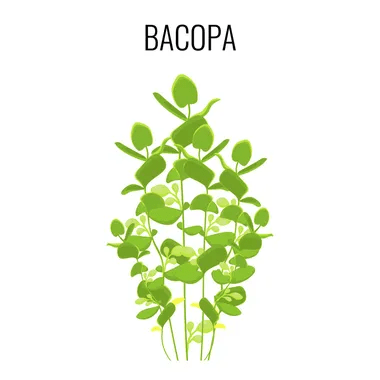
BACOPA

“Bacopa monnieri has been used by Ayurvedic medical practitioners for centuries for a variety of purposes, including improving memory, reducing anxiety, and treating epilepsy (2Trusted Source).
In fact, research shows that it may boost brain function and alleviate anxiety and stress, among other benefits.
A class of powerful compounds called bacosides in Bacopa monnieri is believed to be responsible for these benefits.
For example, one study in mice showed that supplementing with Bacopa monnieri improved their spatial learning and ability to retain information (14Trusted Source).
The same study also found that it increased dendritic length and branching. Dendrites are parts of nerve cells in the brain that are closely linked to learning and memory (14Trusted Source).
Additionally, a 12-week study in 46 healthy adults observed that taking 300 mg of Bacopa monnieri daily significantly improved the speed of processing visual information, learning rate, and memory, compared with the placebo treatment (15Trusted Source)”- healthline.com Last medically reviewed on October 31, 2019
BACOPA

“Bacopa monnieri has been used by Ayurvedic medical practitioners for centuries for a variety of purposes, including improving memory, reducing anxiety, and treating epilepsy (2Trusted Source).
In fact, research shows that it may boost brain function and alleviate anxiety and stress, among other benefits.
A class of powerful compounds called bacosides in Bacopa monnieri is believed to be responsible for these benefits.
For example, one study in mice showed that supplementing with Bacopa monnieri improved their spatial learning and ability to retain information (14Trusted Source).
The same study also found that it increased dendritic length and branching. Dendrites are parts of nerve cells in the brain that are closely linked to learning and memory (14Trusted Source).
Additionally, a 12-week study in 46 healthy adults observed that taking 300 mg of Bacopa monnieri daily significantly improved the speed of processing visual information, learning rate, and memory, compared with the placebo treatment (15Trusted Source)”- healthline.com Last medically reviewed on October 31, 2019
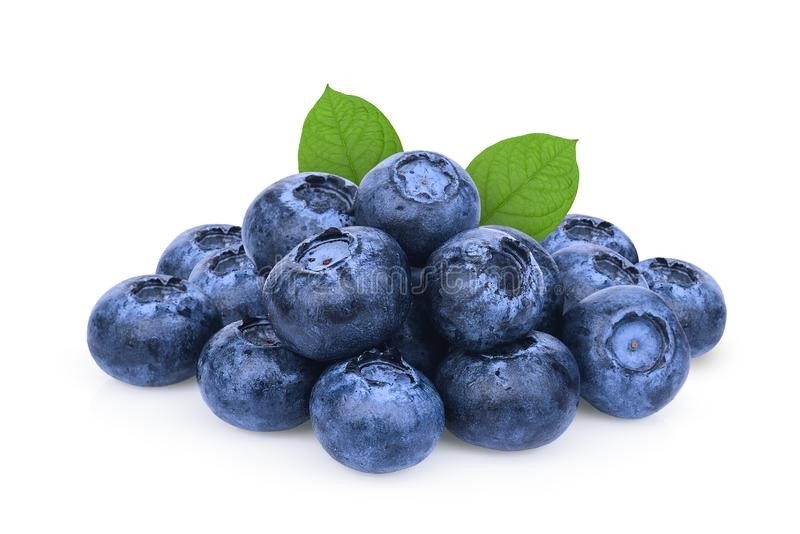
BILBERRY

“Bilberries are small European blueberries that are rich in many nutrients. They’re known to reduced inflammation and blood sugar levels, as well as improved vision and heart health. They can also help brain function, fight bacteria, and lessen symptoms of ulcerative colitis”. -healthline.com Aug 13, 2019
“Bilberry is used by mouth to treat poor circulation that can cause the legs to swell. Some people take bilberry for diabetes, high blood pressure, gout, urinary tract infections (UTIs), and many other conditions.”-healthline.com
BILBERRY

“Bilberries are small European blueberries that are rich in many nutrients. They’re known to reduced inflammation and blood sugar levels, as well as improved vision and heart health. They can also help brain function, fight bacteria, and lessen symptoms of ulcerative colitis”. -healthline.com Aug 13, 2019
“Bilberry is used by mouth to treat poor circulation that can cause the legs to swell. Some people take bilberry for diabetes, high blood pressure, gout, urinary tract infections (UTIs), and many other conditions.”-healthline.com
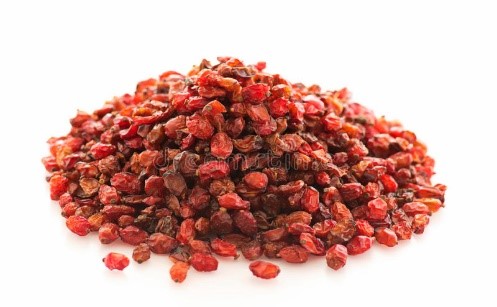
BERBERINE

“Berberine is a bioactive compound that can be extracted from several different plants, including a group of shrubs called Berberis (1).
Technically, it belongs to a class of compounds called alkaloids. It has a yellow color, and has often been used as a dye.
Berberine has a long history of use in traditional Chinese medicine, where it was used to treat various ailments.
Now, modern science has confirmed that it has impressive benefits for several different health problems (2Trusted Source).”-Healthline.com
BERBERINE

“Berberine is a bioactive compound that can be extracted from several different plants, including a group of shrubs called Berberis (1).
Technically, it belongs to a class of compounds called alkaloids. It has a yellow color, and has often been used as a dye.
Berberine has a long history of use in traditional Chinese medicine, where it was used to treat various ailments.
Now, modern science has confirmed that it has impressive benefits for several different health problems (2Trusted Source).”-Healthline.com
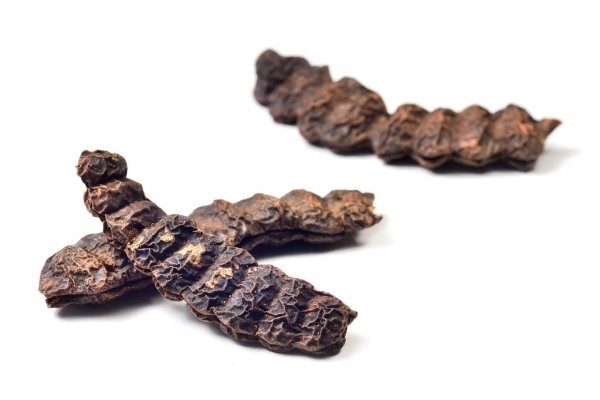
SHIKAKAI
“Strengthens Hair
Coarse and dry hair can make you feel conscious and uncomfortable about letting your hair down. But tying your hair up and keeping it out of the way just compounds your hair woes by breaking and splitting more (due to the pressure and tension from your scrunchies and bands). Shikakai is known to soften and smoothen your hair naturally, by releasing essential oils and vitamins that are key to hair growth. It promotes hair growth and keeps your hair looking soft and shiny so that you can let your hair down now, anytime!
- Thickens Hair and reduces Hair Loss
Hair loss can lead to stress, which only leads to more hair loss. Using Shikakai for hair loss can significantly help you regain your hair’s lustrous thickness and length. Packed with essential nutrients, Shikakai keeps your hair healthy, prevents breakage and brittleness, both of which are the most common reasons for thinning hair.
- Fights Dandruff
Shikakai is a great solution to dandruff worries, with its antifungal, antibacterial and nutritional properties. It can be used to treat your scalp, and get rid of your pesky dandruff woes without any side effects. Say goodbye to those embarrassing white flakes on your clothes and hair with the regular and correct use of this incredible herbal remedy!
- Removes hair lice
Hair lice are one of the embarrassing and pressing problems. Not only do they cause uncontrollable itchiness and scalp discomfort, but they can also cause clumsiness. Because of how rapidly hair lice can spread from person to person, they can quickly turn into a lingering problem with seemingly no solution.
Fortunately, Shikakai offers remedy against hair lice too! Its low pH value along with its antifungal and antibacterial properties can stall the growth of hair lice.
- Prevents a dry scalp
Shikakai works its magic on a dry scalp by acting as a natural cleanser without washing away essential oils.
- Adds shine and softness
The natural ingredients of shikakai make your hair softer and add a beautiful shine to it.
- Heals minor wounds
Owing to its medicinal properties, Shikakai can also come in handy in the case of minor cuts and bruises on your scalp. Shampoos and other lotions can cause pains on the sensitive skin of your scalp, but ground roasted Shikakai paste can offer much relief in such cases!
- Soothes your head
Shikakai is a key ingredient in making soothing hair packs. Usually composed of Shikakai, amla, yogurt and soap nut, these cooling packs can be of sound relief particularly during hot weather, a nagging headache, or simply for a relaxing experience on a lazy day.
- Prevents Gray Hair
Aging can be a rather depressing process. Wrinkles, spots, and gray hair appear all too quickly, leaving you looking tired and worn. Retain your youthful charm with naturally thick black hair, by including Shikakai in your regular hair care routine! Using a hair pack made of Shikakai, soap nut and other herbal ingredients like amla can slow down and prevent the process of hair graying, letting your locks keep you looking fresh and young!
Before applying hair dye, (even natural hair dye), hair should be washed with Shikakai. This helps in letting the dye soak better and stay on longer.”- healthbenefitstimes.com
SHIKAKAI
“Strengthens Hair
Coarse and dry hair can make you feel conscious and uncomfortable about letting your hair down. But tying your hair up and keeping it out of the way just compounds your hair woes by breaking and splitting more (due to the pressure and tension from your scrunchies and bands). Shikakai is known to soften and smoothen your hair naturally, by releasing essential oils and vitamins that are key to hair growth. It promotes hair growth and keeps your hair looking soft and shiny so that you can let your hair down now, anytime!
- Thickens Hair and reduces Hair Loss
Hair loss can lead to stress, which only leads to more hair loss. Using Shikakai for hair loss can significantly help you regain your hair’s lustrous thickness and length. Packed with essential nutrients, Shikakai keeps your hair healthy, prevents breakage and brittleness, both of which are the most common reasons for thinning hair.
- Fights Dandruff
Shikakai is a great solution to dandruff worries, with its antifungal, antibacterial and nutritional properties. It can be used to treat your scalp, and get rid of your pesky dandruff woes without any side effects. Say goodbye to those embarrassing white flakes on your clothes and hair with the regular and correct use of this incredible herbal remedy!
- Removes hair lice
Hair lice are one of the embarrassing and pressing problems. Not only do they cause uncontrollable itchiness and scalp discomfort, but they can also cause clumsiness. Because of how rapidly hair lice can spread from person to person, they can quickly turn into a lingering problem with seemingly no solution.
Fortunately, Shikakai offers remedy against hair lice too! Its low pH value along with its antifungal and antibacterial properties can stall the growth of hair lice.
- Prevents a dry scalp
Shikakai works its magic on a dry scalp by acting as a natural cleanser without washing away essential oils.
- Adds shine and softness
The natural ingredients of shikakai make your hair softer and add a beautiful shine to it.
- Heals minor wounds
Owing to its medicinal properties, Shikakai can also come in handy in the case of minor cuts and bruises on your scalp. Shampoos and other lotions can cause pains on the sensitive skin of your scalp, but ground roasted Shikakai paste can offer much relief in such cases!
- Soothes your head
Shikakai is a key ingredient in making soothing hair packs. Usually composed of Shikakai, amla, yogurt and soap nut, these cooling packs can be of sound relief particularly during hot weather, a nagging headache, or simply for a relaxing experience on a lazy day.
- Prevents Gray Hair
Aging can be a rather depressing process. Wrinkles, spots, and gray hair appear all too quickly, leaving you looking tired and worn. Retain your youthful charm with naturally thick black hair, by including Shikakai in your regular hair care routine! Using a hair pack made of Shikakai, soap nut and other herbal ingredients like amla can slow down and prevent the process of hair graying, letting your locks keep you looking fresh and young!
Before applying hair dye, (even natural hair dye), hair should be washed with Shikakai. This helps in letting the dye soak better and stay on longer.”- healthbenefitstimes.com
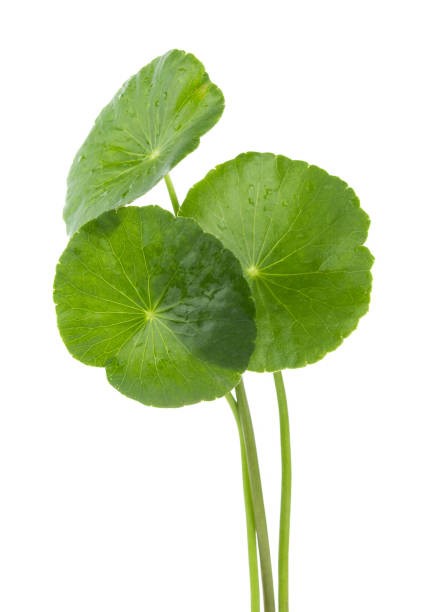
GOTU KOLA

“It may help boost cognitive function
A small 2016 studyTrusted Source compared the effects of gotu kola extract and folic acid in boosting cognitive function after a stroke. This small study assessed the impact on three groups of participants — one taking 1,000 milligrams (mg) of gotu kola per day, one taking 750 mg of gotu kola per day, and one taking 3 mg of folic acid per day.
Although gotu kola and folic acid were equally beneficial in improving overall cognition, gotu kola was more effective in improving memory domain.
A separate studyTrusted Source looked at the cognitive enhancing effects of gotu kola water extract on mice. Although both young and old mice showed improvements in learning and memory using the Morris Water Maze, the effect was higher in the older mice.
How to use: Take 750 to 1,000 mg of gotu kola per day for up to 14 days at a time.
2. It may help treat Alzheimer’s disease
Gotu kola has the ability to enhance memory and nerve function, which gives it potential in treating Alzheimer’s disease. In fact, one 2012 study on mice found that gotu kola extract had a positive effect on behavioral abnormalities in mice with Alzheimer’s disease.
The extract was also shown, in lab and animal studies, to have a modest effect on protecting brain cells from toxicity. This could also protect the cells from forming the plaque associated with Alzheimer’s.
Still, further research is needed to determine exactly how gotu kola could be used to treat Alzheimer’s. If you’re interested in adding this to your treatment plan, talk to your doctor before use.
How to use: Take 30 to 60 drops of liquid gotu kola extract 3 times per day. Dosages may vary between manufacturers, so always carefully follow the directions on the bottle.
3. It may help reduce anxiety and stress
Researchers in an animal study from 2016Trusted Source found that gotu kola had an anti-anxiety effect on male mice that were sleep deprived for 72 hours. Sleep deprivation can cause anxiety, oxidative damage, and neuroinflammation.
Mice that were given gotu kola for five consecutive days before undergoing sleep deprivation experienced significantly less anxiety-like behavior. They also experienced improved locomotor activity and less oxidative damage.
A 2013 reviewTrusted Source of anti-anxiety herbal medicines also concluded that gotu kola has an acute anti-anxiety effect. However, more research is needed to confirm these findings.
How to use: Take 500 mg of gotu kola extract twice a day for up to 14 days at a time. You can take up to 2,000 mg per day in cases of extreme anxiety.
4. It may act as an antidepressant
Gotu kola’s positive effect on brain function may also make it an effective antidepressant.
A review from 2016Trusted Source supports these findings, in part due to a study on 33 people with generalized anxiety disorder. The participants were asked to take gotu kola in place of their antidepressant medication for 60 days. They self-reported decreased stress, anxiety, and depression.
Another study discussed in the review assessed the effect of gotu kola on rats induced with chronic depression. The herbal remedy had a positive effect on certain elements of behavioral depression, including body weight, body temperature, and heart rate.
How to use: Take 500 mg of gotu kola twice a day for up to 14 days at a time. You can take up to 2,000 mg per day during times of intensified depression.
5. It may improve circulation and reduce swelling
Research from 2001Trusted Source found that gotu kola can reduce problems with fluid retention, ankle swelling, and circulation tied to taking flights that last longer than three hours.
Participants who experienced mild-to-moderate superficial venous disease with varicose veins were asked to take gotu kola for two days before their flight, the day of their flight, and the day after their flight.
Researchers found that participants who took the supplement experienced significantly less fluid retention and ankle swelling than those who didn’t.
Older researchTrusted Source has also shown that gotu kola can be useful in treating varicose veins. This may be because gotu kola has a positive metabolic effect on the connective tissue of the vascular wall.”-healthline.com
GOTU KOLA

“It may help boost cognitive function
A small 2016 studyTrusted Source compared the effects of gotu kola extract and folic acid in boosting cognitive function after a stroke. This small study assessed the impact on three groups of participants — one taking 1,000 milligrams (mg) of gotu kola per day, one taking 750 mg of gotu kola per day, and one taking 3 mg of folic acid per day.
Although gotu kola and folic acid were equally beneficial in improving overall cognition, gotu kola was more effective in improving memory domain.
A separate studyTrusted Source looked at the cognitive enhancing effects of gotu kola water extract on mice. Although both young and old mice showed improvements in learning and memory using the Morris Water Maze, the effect was higher in the older mice.
How to use: Take 750 to 1,000 mg of gotu kola per day for up to 14 days at a time.
2. It may help treat Alzheimer’s disease
Gotu kola has the ability to enhance memory and nerve function, which gives it potential in treating Alzheimer’s disease. In fact, one 2012 study on mice found that gotu kola extract had a positive effect on behavioral abnormalities in mice with Alzheimer’s disease.
The extract was also shown, in lab and animal studies, to have a modest effect on protecting brain cells from toxicity. This could also protect the cells from forming the plaque associated with Alzheimer’s.
Still, further research is needed to determine exactly how gotu kola could be used to treat Alzheimer’s. If you’re interested in adding this to your treatment plan, talk to your doctor before use.
How to use: Take 30 to 60 drops of liquid gotu kola extract 3 times per day. Dosages may vary between manufacturers, so always carefully follow the directions on the bottle.
3. It may help reduce anxiety and stress
Researchers in an animal study from 2016Trusted Source found that gotu kola had an anti-anxiety effect on male mice that were sleep deprived for 72 hours. Sleep deprivation can cause anxiety, oxidative damage, and neuroinflammation.
Mice that were given gotu kola for five consecutive days before undergoing sleep deprivation experienced significantly less anxiety-like behavior. They also experienced improved locomotor activity and less oxidative damage.
A 2013 reviewTrusted Source of anti-anxiety herbal medicines also concluded that gotu kola has an acute anti-anxiety effect. However, more research is needed to confirm these findings.
How to use: Take 500 mg of gotu kola extract twice a day for up to 14 days at a time. You can take up to 2,000 mg per day in cases of extreme anxiety.
4. It may act as an antidepressant
Gotu kola’s positive effect on brain function may also make it an effective antidepressant.
A review from 2016Trusted Source supports these findings, in part due to a study on 33 people with generalized anxiety disorder. The participants were asked to take gotu kola in place of their antidepressant medication for 60 days. They self-reported decreased stress, anxiety, and depression.
Another study discussed in the review assessed the effect of gotu kola on rats induced with chronic depression. The herbal remedy had a positive effect on certain elements of behavioral depression, including body weight, body temperature, and heart rate.
How to use: Take 500 mg of gotu kola twice a day for up to 14 days at a time. You can take up to 2,000 mg per day during times of intensified depression.
5. It may improve circulation and reduce swelling
Research from 2001Trusted Source found that gotu kola can reduce problems with fluid retention, ankle swelling, and circulation tied to taking flights that last longer than three hours.
Participants who experienced mild-to-moderate superficial venous disease with varicose veins were asked to take gotu kola for two days before their flight, the day of their flight, and the day after their flight.
Researchers found that participants who took the supplement experienced significantly less fluid retention and ankle swelling than those who didn’t.
Older researchTrusted Source has also shown that gotu kola can be useful in treating varicose veins. This may be because gotu kola has a positive metabolic effect on the connective tissue of the vascular wall.”-healthline.com
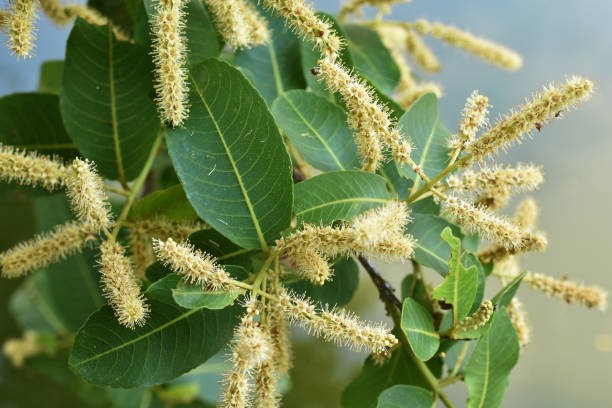
ARJUNA
 “It has various medicinal properties like antioxidant, anti-inflammatory and antimicrobial. Arjuna helps reduce the risk of heart diseases. It strengthens and tones the heart muscles and helps in proper functioning of the heart. Arjuna tree also has strong anti-hypertensive property and helps reduce high blood pressure.” – www.1mg.com/ Dec 16, 201
“It has various medicinal properties like antioxidant, anti-inflammatory and antimicrobial. Arjuna helps reduce the risk of heart diseases. It strengthens and tones the heart muscles and helps in proper functioning of the heart. Arjuna tree also has strong anti-hypertensive property and helps reduce high blood pressure.” – www.1mg.com/ Dec 16, 201
ARJUNA
 “It has various medicinal properties like antioxidant, anti-inflammatory and antimicrobial. Arjuna helps reduce the risk of heart diseases. It strengthens and tones the heart muscles and helps in proper functioning of the heart. Arjuna tree also has strong anti-hypertensive property and helps reduce high blood pressure.” – www.1mg.com/ Dec 16, 201
“It has various medicinal properties like antioxidant, anti-inflammatory and antimicrobial. Arjuna helps reduce the risk of heart diseases. It strengthens and tones the heart muscles and helps in proper functioning of the heart. Arjuna tree also has strong anti-hypertensive property and helps reduce high blood pressure.” – www.1mg.com/ Dec 16, 201
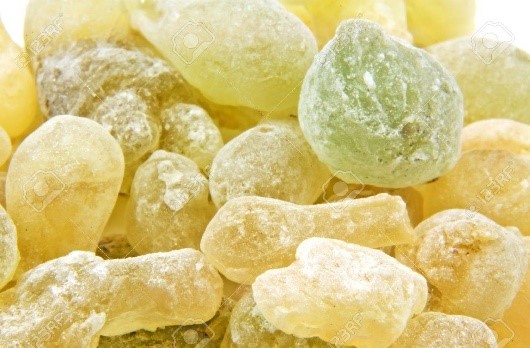
BOSWELLIA RESIN

“Boswellia serrata and other species of boswellia are used in essential oils or burned as incense. The oil is also used in food, cosmetics, soaps, and beverages.
In herbal medicine, boswellia is sometimes taken by mouth or applied to the skin to manage the following conditions:
- Asthma
- Collagenous arthritis
- Crohn’s disease
- Menstrual cramps
- Osteoarthritis
- Rheumatoid arthritis
- Ulcerative colitis
Osteoarthritis Pain
For a report published in the Cochrane Database of Systematic Reviews in 2014, researchers analyzed previously published trials testing the effects of herbal supplements for osteoarthritis.1 Their analysis of studies involving boswellia found evidence that it reduced pain (as measured by a pain scale) and improved physical function compared to a placebo.
Asthma
A small 2015 study published in the European Review for Medical and Pharmacological Sciences, Boswellia may help reduce the need for inhalation therapy in people with persistent asthma.2 Participants in the study (who had mild-to-severe persistent asthma) received either inhalation therapy with an oral boswellia supplement or inhalation therapy alone.
After four weeks of treatment, those who took the Boswellia supplement in addition to the inhalation therapy had a decrease in the number of inhalations needed compared to those who had inhalation therapy alone.
Crohn’s Disease
A study published in Inflammatory Bowel Diseases found that a boswellia extract may not help people with Crohn’s disease who are in remission.3 After 12 months of treatment with a boswellia extract, there was no significant difference in relapse time, the severity of symptoms, or maintenance of remission.
Inflammatory Bowel Disease
In a 2007 study involving 31 people with collagenous colitis (a type of inflammatory bowel disease that causes chronic diarrhea), researchers found that taking a boswellia extract three times daily for six weeks was not more effective than a placebo when comparing clinical remission, lab testing, or quality of life.4”verywellhealth.com
BOSWELLIA RESIN

“Boswellia serrata and other species of boswellia are used in essential oils or burned as incense. The oil is also used in food, cosmetics, soaps, and beverages.
In herbal medicine, boswellia is sometimes taken by mouth or applied to the skin to manage the following conditions:
- Asthma
- Collagenous arthritis
- Crohn’s disease
- Menstrual cramps
- Osteoarthritis
- Rheumatoid arthritis
- Ulcerative colitis
Osteoarthritis Pain
For a report published in the Cochrane Database of Systematic Reviews in 2014, researchers analyzed previously published trials testing the effects of herbal supplements for osteoarthritis.1 Their analysis of studies involving boswellia found evidence that it reduced pain (as measured by a pain scale) and improved physical function compared to a placebo.
Asthma
A small 2015 study published in the European Review for Medical and Pharmacological Sciences, Boswellia may help reduce the need for inhalation therapy in people with persistent asthma.2 Participants in the study (who had mild-to-severe persistent asthma) received either inhalation therapy with an oral boswellia supplement or inhalation therapy alone.
After four weeks of treatment, those who took the Boswellia supplement in addition to the inhalation therapy had a decrease in the number of inhalations needed compared to those who had inhalation therapy alone.
Crohn’s Disease
A study published in Inflammatory Bowel Diseases found that a boswellia extract may not help people with Crohn’s disease who are in remission.3 After 12 months of treatment with a boswellia extract, there was no significant difference in relapse time, the severity of symptoms, or maintenance of remission.
Inflammatory Bowel Disease
In a 2007 study involving 31 people with collagenous colitis (a type of inflammatory bowel disease that causes chronic diarrhea), researchers found that taking a boswellia extract three times daily for six weeks was not more effective than a placebo when comparing clinical remission, lab testing, or quality of life.4”verywellhealth.com
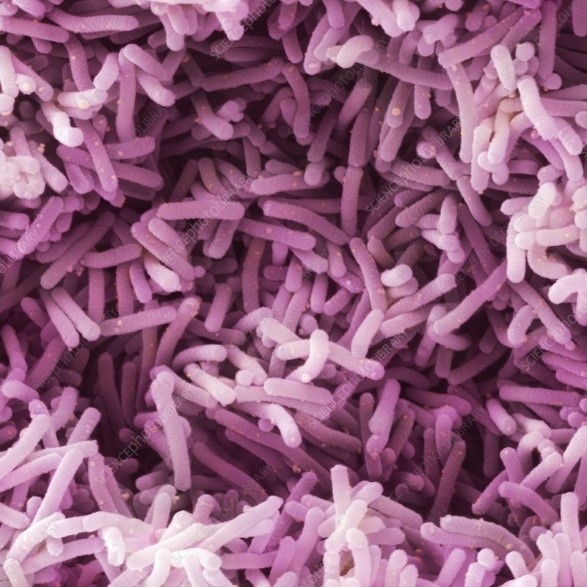
LACTOBACILLUS CASEI
“What is Lactobacillus casei?
Lactobacillus casei is a Gram-positive, nonpathogenic lactic acid bacterium [1]. It is found in fermented dairy products (e.g. cheese), plant materials (e.g. wine, pickles) and in the reproductive and gastrointestinal tracts of humans and animals [2, 3].
As a nutritional supplement, Lactobacillus casei has been shown to improve intestinal microbial balance, arthritis, type 2 diabetes and to have potential anti-cancer properties [4].
Antioxidant Activity
Treatment with L. casei reduced oxidative stress caused by aflatoxin and induced a significant improvement in all the biochemical and histological liver parameters in rats [6].
Potential Benefits of L. casei
- caseiprobiotic supplements have not been approved by the FDA for medical use and generally lack solid clinical research. Regulations set manufacturing standards for them but don’t guarantee that they’re safe or effective. Speak with your doctor before supplementing.
Possibly Effective For
1) Gut Health
Intestinal Microbiota
- caseiconsumption altered the composition and diversity of human intestinalmicrobiota. There is a positive correlation between L. casei and Prevotella, Lactobacillus, Faecalibacterium, Propionibacterium, Bifidobacterium and some Bacteroidaceae and Lachnospiraceae, and a negative correlation with the presence of Clostridium, Phascolarctobacterium, Serratia, Enterococcus, Shigella, and Shewanella [7].
- casei suppressed potentially harmful Pseudomonasand Acinetobacterin volunteers [8].
Fermented milk containing L. casei preserved the diversity of the gut microbiota, relieved abdominal dysfunction, and prevented an increase in cortisol levels in healthy medical students exposed to academic stress [9].
Constipation and Diarrhea
Continuous consumption of fermented milk containing L. casei alleviated constipation-related symptoms, provided satisfactory bowel habits, and resulted in earlier recovery from hemorrhoids in women after childbirth [10].
A fermented milk beverage containing L. casei relieved irregular bowel movement in gastrectomized patients. It reduced the degree of constipation and improved diarrhea [11].
- caseiintake was associated with less antibiotic-associated diarrhea in patients [12,13], reduced the incidence, duration, and severity of diarrhea in children [14, 15], and prevented constipation in mice [16]” – https://supplements.selfdecode.com/blog/l-casei/ Written by Puya Yazdi, MD | Last updated: September 9, 2021
LACTOBACILLUS CASEI
“What is Lactobacillus casei?
Lactobacillus casei is a Gram-positive, nonpathogenic lactic acid bacterium [1]. It is found in fermented dairy products (e.g. cheese), plant materials (e.g. wine, pickles) and in the reproductive and gastrointestinal tracts of humans and animals [2, 3].
As a nutritional supplement, Lactobacillus casei has been shown to improve intestinal microbial balance, arthritis, type 2 diabetes and to have potential anti-cancer properties [4].
Antioxidant Activity
Treatment with L. casei reduced oxidative stress caused by aflatoxin and induced a significant improvement in all the biochemical and histological liver parameters in rats [6].
Potential Benefits of L. casei
- caseiprobiotic supplements have not been approved by the FDA for medical use and generally lack solid clinical research. Regulations set manufacturing standards for them but don’t guarantee that they’re safe or effective. Speak with your doctor before supplementing.
Possibly Effective For
1) Gut Health
Intestinal Microbiota
- caseiconsumption altered the composition and diversity of human intestinalmicrobiota. There is a positive correlation between L. casei and Prevotella, Lactobacillus, Faecalibacterium, Propionibacterium, Bifidobacterium and some Bacteroidaceae and Lachnospiraceae, and a negative correlation with the presence of Clostridium, Phascolarctobacterium, Serratia, Enterococcus, Shigella, and Shewanella [7].
- casei suppressed potentially harmful Pseudomonasand Acinetobacterin volunteers [8].
Fermented milk containing L. casei preserved the diversity of the gut microbiota, relieved abdominal dysfunction, and prevented an increase in cortisol levels in healthy medical students exposed to academic stress [9].
Constipation and Diarrhea
Continuous consumption of fermented milk containing L. casei alleviated constipation-related symptoms, provided satisfactory bowel habits, and resulted in earlier recovery from hemorrhoids in women after childbirth [10].
A fermented milk beverage containing L. casei relieved irregular bowel movement in gastrectomized patients. It reduced the degree of constipation and improved diarrhea [11].
- caseiintake was associated with less antibiotic-associated diarrhea in patients [12,13], reduced the incidence, duration, and severity of diarrhea in children [14, 15], and prevented constipation in mice [16]” – https://supplements.selfdecode.com/blog/l-casei/ Written by Puya Yazdi, MD | Last updated: September 9, 2021
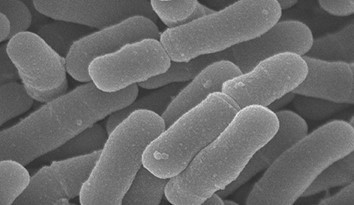
BIFIDOBACTERIUM INFANTIS

What are the benefits of Lactobacillus Casei?
When you don’t have enough of the good bacteria, adding more L. Casei to your dietcan help regulate your digestive system.
Probiotic supplements containing L. Casei are used to prevent or treat diarrhea. This includes infectious diarrhea, traveler’s diarrhea, and antibiotic-associated diarrhea.
It may also have some effect on other digestive problems, including:
- colic
- constipation
- Crohn’s disease
- inflammatory bowel disease (IBD)
- irritable bowel syndrome (IBS)
- lactose intolerance
- ulcerative colitis
L.casei may also be useful for:
- acne, hives, and fever blisters
- allergies, eczema, and dermatitis
- cold, flu, and respiratory infection
- ear infection (otitis media)
- oral health problems, such as plaque, gingivitis, and canker sores
- Helicobacter pylori infection, which causes stomach ulcers
- Lyme disease
- necrotizing enterocolitis (NEC), a serious intestinal disease common in premature infants
- rheumatoid arthritis (RA)
- urinary tract and vaginal infections
BIFIDOBACTERIUM INFANTIS

What are the benefits of Lactobacillus Casei?
When you don’t have enough of the good bacteria, adding more L. Casei to your dietcan help regulate your digestive system.
Probiotic supplements containing L. Casei are used to prevent or treat diarrhea. This includes infectious diarrhea, traveler’s diarrhea, and antibiotic-associated diarrhea.
It may also have some effect on other digestive problems, including:
- colic
- constipation
- Crohn’s disease
- inflammatory bowel disease (IBD)
- irritable bowel syndrome (IBS)
- lactose intolerance
- ulcerative colitisL.casei may also be useful for:
- acne, hives, and fever blisters
- allergies, eczema, and dermatitis
- cold, flu, and respiratory infection
- ear infection (otitis media)
- oral health problems, such as plaque, gingivitis, and canker sores
- Helicobacter pylori infection, which causes stomach ulcers
- Lyme disease
- necrotizing enterocolitis (NEC), a serious intestinal disease common in premature infants
- rheumatoid arthritis (RA)
- urinary tract and vaginal infections
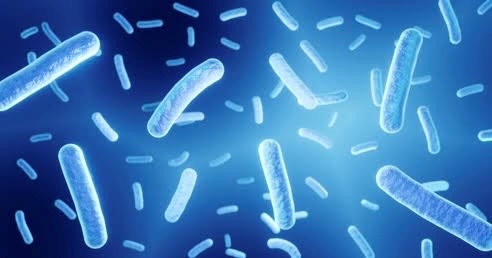
LACTOBACILLUS PROBIOTIC STRAIN

“Lactobacillus species are probiotics (“good” bacteria) normally found in human digestive and urinary tracts. They can be consumed for diarrhea and “gut health.” “Good” bacteria such as Lactobacillus can help the body break down food, absorb nutrients, and fight off “bad” organisms that might cause diseases.“ WebMd.com
“Found naturally in your intestines, Lactobacillus acidophilus is one of the best-known probiotics—beneficial microorganisms that may promote health and protect against infections.
Lactobacillus acidophilus balances potentially harmful bacteria that can otherwise flourish in the gut due to illness or antibiotics. It may also help balance flora in the vagina, helping to prevent yeast infections.
Commonly found in yogurt and other fermented foods, it is also available in supplement form.”- verywellhealth.com
Health Benefits
“L. acidophilus belongs to the Lactobacillus family of bacteria. Lactic acid bacteria (or L) converts sugars into lactic acid and hydrogen peroxide, substances that inhibit the growth of undesirable bacteria in the intestines.
In alternative medicine, acidophilus is sometimes used to prevent or treat several health conditions, including:”-verywellhealth.com
- Acne1
- Bacterial vaginosis
- C. difficile infection2
- Candida infection (yeast infection)3
- Diabetes
- Diarrhea2
- E. coli infection
- Eczema4
- Irritable bowel syndrome (IBS)
- Lactose intolerance
- Urinary tract infection (UTI)
- IBS
- “Vaginal Health
- acidophilusmay be helpful in the prevention and treatment of vaginal infections. According to a 2014 review, Lactobacillussupplements (including acidophilus) taken daily may help prevent and treat bacterial vaginosis, a common vaginal infection that results from an imbalance in the types of bacteria (flora) in the vagina.11
Acidophilus is commonly recommended for the prevention of yeast infections while taking antibiotics. Laboratory research shows the probiotic inhibits the growth of Candida albicans in cell cultures, but little research has been done in humans.12
A 2015 clinical trial published in the journal Probiotics and Antimicrobial Proteins found L. acidophilus can help to prevent recurring yeast infections following standard medical treatment.13
In the study, 436 women with vaginal candidiasis were treated with the antifungal fenticonazole. Five days later, roughly half the subjects were treated with multiple intravaginal L. acidophilus treatments. Those given the probiotic had a significant reduction in recurring infections.
Immune Health
Acidophilus has antimicrobial and antiviral properties and may help to prevent colds, viruses, and even allergies. There is research to suggest probiotics, including acidophilus, may reduce cold symptoms in children.” verywellhealth.com
LACTOBACILLUS PROBIOTIC STRAIN

“Lactobacillus species are probiotics (“good” bacteria) normally found in human digestive and urinary tracts. They can be consumed for diarrhea and “gut health.” “Good” bacteria such as Lactobacillus can help the body break down food, absorb nutrients, and fight off “bad” organisms that might cause diseases.“ WebMd.com
“Found naturally in your intestines, Lactobacillus acidophilus is one of the best-known probiotics—beneficial microorganisms that may promote health and protect against infections.
Lactobacillus acidophilus balances potentially harmful bacteria that can otherwise flourish in the gut due to illness or antibiotics. It may also help balance flora in the vagina, helping to prevent yeast infections.
Commonly found in yogurt and other fermented foods, it is also available in supplement form.”- verywellhealth.com
Health Benefits
“L. acidophilus belongs to the Lactobacillus family of bacteria. Lactic acid bacteria (or L) converts sugars into lactic acid and hydrogen peroxide, substances that inhibit the growth of undesirable bacteria in the intestines.
In alternative medicine, acidophilus is sometimes used to prevent or treat several health conditions, including:”-verywellhealth.com
- Acne1
- Bacterial vaginosis
- C. difficile infection2
- Candida infection (yeast infection)3
- Diabetes
- Diarrhea2
- E. coli infection
- Eczema4
- Irritable bowel syndrome (IBS)
- Lactose intolerance
- Urinary tract infection (UTI)
- IBS
- “Vaginal Health
- acidophilusmay be helpful in the prevention and treatment of vaginal infections. According to a 2014 review, Lactobacillussupplements (including acidophilus) taken daily may help prevent and treat bacterial vaginosis, a common vaginal infection that results from an imbalance in the types of bacteria (flora) in the vagina.11
Acidophilus is commonly recommended for the prevention of yeast infections while taking antibiotics. Laboratory research shows the probiotic inhibits the growth of Candida albicans in cell cultures, but little research has been done in humans.12
A 2015 clinical trial published in the journal Probiotics and Antimicrobial Proteins found L. acidophilus can help to prevent recurring yeast infections following standard medical treatment.13
In the study, 436 women with vaginal candidiasis were treated with the antifungal fenticonazole. Five days later, roughly half the subjects were treated with multiple intravaginal L. acidophilus treatments. Those given the probiotic had a significant reduction in recurring infections.
Immune Health
Acidophilus has antimicrobial and antiviral properties and may help to prevent colds, viruses, and even allergies. There is research to suggest probiotics, including acidophilus, may reduce cold symptoms in children.” verywellhealth.com
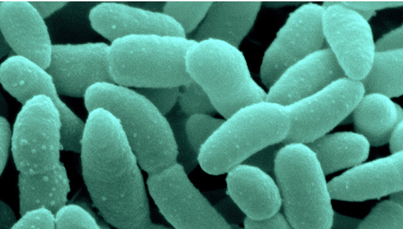
BACILLUS

Some people use Bacillus coagulans to prevent respiratory infections and ramp up the immune system. It is also used to prevent cancer or the formation of cancer-causing agents. There is also some interest in using it as an additive to vaccines to improve their effectiveness.” “People take Bacillus coagulans for diarrhea, including infectious types such as rotaviral diarrhea in children; traveler’s diarrhea; and diarrhea caused by antibiotics. Bacillus coagulans is also used for general digestion problems, irritable bowel syndrome (IBS), inflammatory bowel disease (IBD, Crohn’s disease, ulcerative colitis), a bowel disorder called Clostridium difficile colitis, excessive growth of “bad” bacteria in the intestine, and infection due to the ulcer-causing bacterium Helicobacter pylori.”-(rxlist.com) Reviewed on 6/11/2021 “Bacillus coagulans produces lactic acid and, as a result, is often misclassified as lactic acid bacteria such as lactobacillus. In fact, some commercial products containing Bacillus coagulans are marketed as Lactobacillus sporogenes or “spore-forming lactic acid bacterium.” Unlike lactic acid bacteria such as lactobacillus or bifidobacteria, Bacillus coagulans forms reproductive structures called spores. Spores are actually an important factor in telling Bacillus coagulans apart from lactic acid bacteria.”-rxlist.com
BACILLUS

Some people use Bacillus coagulans to prevent respiratory infections and ramp up the immune system. It is also used to prevent cancer or the formation of cancer-causing agents. There is also some interest in using it as an additive to vaccines to improve their effectiveness.” “People take Bacillus coagulans for diarrhea, including infectious types such as rotaviral diarrhea in children; traveler’s diarrhea; and diarrhea caused by antibiotics. Bacillus coagulans is also used for general digestion problems, irritable bowel syndrome (IBS), inflammatory bowel disease (IBD, Crohn’s disease, ulcerative colitis), a bowel disorder called Clostridium difficile colitis, excessive growth of “bad” bacteria in the intestine, and infection due to the ulcer-causing bacterium Helicobacter pylori.”-(rxlist.com) Reviewed on 6/11/2021 “Bacillus coagulans produces lactic acid and, as a result, is often misclassified as lactic acid bacteria such as lactobacillus. In fact, some commercial products containing Bacillus coagulans are marketed as Lactobacillus sporogenes or “spore-forming lactic acid bacterium.” Unlike lactic acid bacteria such as lactobacillus or bifidobacteria, Bacillus coagulans forms reproductive structures called spores. Spores are actually an important factor in telling Bacillus coagulans apart from lactic acid bacteria.”-rxlist.com
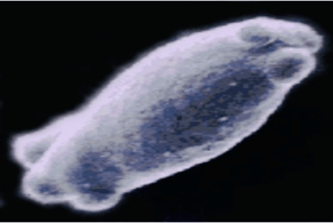
BRETTANOMYCES BENEFICIAL YEAST STRAIN PROBIOTIC

Brettanomyces Beneficial Yeast Strain Probiotic- “Probiotic yeasts have also shown a positive effect on poultry health and nutrition by reducing lactic acid acidosis, increasing fiber digestibility, secreting enzymes and improving animal performance by enhancing their growth rate and increasing milk, meat and eggs production” Jlongdom.org
Advantages of yeast over bacteria probiotics
“More than 50 clinical trials (more than 8,000 subjects involved in total) have been conducted to date regarding the efficacy of S. boulardii and its effectiveness in the prevention and treatment of intestinal symptoms, specifically antibiotic-associated diarrhea (AAD), diarrhea due to clostridium difficile infection (CDI), traveller’s diarrhea and acute diarrhea and persistent diarrhea. Studies showed several advantages of consuming S. boulardii over bacteria probiotics in treating such gastrointestinal diseases). “-Nutriainingredients
Brettanomyces is a non-spore forming genus of yeast in the family Saccharomycetaceae. This beneficial yeast strain may help with yeast infections, Candida, and problem skin.
BRETTANOMYCES BENEFICIAL YEAST STRAIN PROBIOTIC

Brettanomyces Beneficial Yeast Strain Probiotic- “Probiotic yeasts have also shown a positive effect on poultry health and nutrition by reducing lactic acid acidosis, increasing fiber digestibility, secreting enzymes and improving animal performance by enhancing their growth rate and increasing milk, meat and eggs production” Jlongdom.org
Advantages of yeast over bacteria probiotics
“More than 50 clinical trials (more than 8,000 subjects involved in total) have been conducted to date regarding the efficacy of S. boulardii and its effectiveness in the prevention and treatment of intestinal symptoms, specifically antibiotic-associated diarrhea (AAD), diarrhea due to clostridium difficile infection (CDI), traveller’s diarrhea and acute diarrhea and persistent diarrhea. Studies showed several advantages of consuming S. boulardii over bacteria probiotics in treating such gastrointestinal diseases). “-Nutriainingredients
Brettanomyces is a non-spore forming genus of yeast in the family Saccharomycetaceae. This beneficial yeast strain may help with yeast infections, Candida, and problem skin.
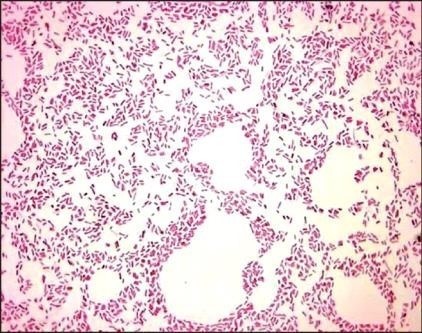
SACCHAROMYCES BOULARDII

“Saccharomyces boulardii is used for treating and preventing diarrhea, including infectious types such as rotaviral diarrhe in children, diarrhea caused by gastrointestinal (GI) take-over (overgrowth) by “bad” bacteria in adults, traveler’s diarrhe and diarrhea associated with tube feedings” -Rxlist.com Jun 11, 2021
Helps with…
Crohn’s disease diarrhea irritable bowel syndrome ulcerative colitis Gastrointestinal Disorders
Saccharomyces boulardii may help in the treatment and/or prevention of certain gastrointestinal disorders, “according to report published in the World Journal of Gastroenterology in 2010.2 For the report, investigators analyzed 27 clinical tria testing the use of Saccharomyces boulardii for various diseases. They found that it helped with travelers diarrhea and diarrhea associated with the use of antibiotics.
Moreover, it also shows that it shows promise to helping with IBS, acute adult diarrhea, and Crohn’s disease. More resea must be conducted on Saccharomyces boulardii”
SACCHAROMYCES BOULARDII

“Saccharomyces boulardii is used for treating and preventing diarrhea, including infectious types such as rotaviral diarrhe in children, diarrhea caused by gastrointestinal (GI) take-over (overgrowth) by “bad” bacteria in adults, traveler’s diarrhe and diarrhea associated with tube feedings” -Rxlist.com Jun 11, 2021
Helps with…
Crohn’s disease diarrhea irritable bowel syndrome ulcerative colitis Gastrointestinal Disorders
Saccharomyces boulardii may help in the treatment and/or prevention of certain gastrointestinal disorders, “according to report published in the World Journal of Gastroenterology in 2010.2 For the report, investigators analyzed 27 clinical tria testing the use of Saccharomyces boulardii for various diseases. They found that it helped with travelers diarrhea and diarrhea associated with the use of antibiotics.
Moreover, it also shows that it shows promise to helping with IBS, acute adult diarrhea, and Crohn’s disease. More resea must be conducted on Saccharomyces boulardii”
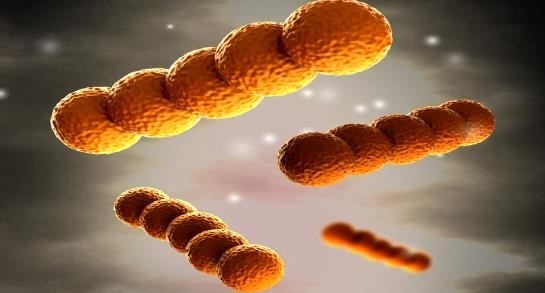
GLUCONOBACTER OXYDANS

12 Gluconobacter oxydans subsp. suboxydans
Gluconobacter oxydans subsp. suboxydans, formerly known as Acetobacter suboxydans is a Gram-negative ellipsoidal to rod-shaped (0.5–0.8 μm × 0.9–4.2 μm) bacterium which occurs as single cells and/or in pairs. The cells, on rare occasions, form chains or enlarged, swollen forms. It was found to have a small genome size (2240–3787 kb) (Verma et al., 1997), which may be due to the organism having a small range of metabolic activities (Brubaker, 1991). This organism has a relatively slow growth rate, a low concentration of cells in the mature culture, and a disordered metabolism, leading to describe it as a spontaneous auxotrophic mutant (Kulhanek, 1989). The organism is an obligate aerobe with oxygen as th terminal electron acceptor. The optimum growth temperature is 25–30°C with no growth occurring at 37°C. The optimal for growth is 5.5–6.0, although most strains will grow at lower pH values. Gluconobacter can be found naturally in garden soil, fruit, cider, beer and wine. It is responsible for rot in apples and pears (De Ley and Swings, 1984).”
Assessment of Antimicrobial Activity of Different Phytochemicals Against Enteric Diseases in Different Animal Models
GLUCONOBACTER OXYDANS

12 Gluconobacter oxydans subsp. suboxydans
Gluconobacter oxydans subsp. suboxydans, formerly known as Acetobacter suboxydans is a Gram-negative ellipsoidal to rod-shaped (0.5–0.8 μm × 0.9–4.2 μm) bacterium which occurs as single cells and/or in pairs. The cells, on rare occasions, form chains or enlarged, swollen forms. It was found to have a small genome size (2240–3787 kb) (Verma et al., 1997), which may be due to the organism having a small range of metabolic activities (Brubaker, 1991). This organism has a relatively slow growth rate, a low concentration of cells in the mature culture, and a disordered metabolism, leading to describe it as a spontaneous auxotrophic mutant (Kulhanek, 1989). The organism is an obligate aerobe with oxygen as th terminal electron acceptor. The optimum growth temperature is 25–30°C with no growth occurring at 37°C. The optimal for growth is 5.5–6.0, although most strains will grow at lower pH values. Gluconobacter can be found naturally in garden soil, fruit, cider, beer and wine. It is responsible for rot in apples and pears (De Ley and Swings, 1984).”
Assessment of Antimicrobial Activity of Different Phytochemicals Against Enteric Diseases in Different Animal Models
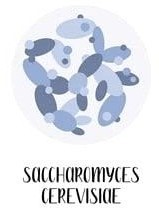
SACCHAROMYCES CEREVISIAE

“Research has shown that S. cerevisiae, the strain of yeast in nutritional yeast, can support th immune system and reduce inflammation resulting from bacterial infection. It may also be helpful in treating diarrhea.” –
Medical News today
cerevisiae, aka brewer’s yeast, is full of nutrients and is a wonderful probiotic for gut health, skin health, and wound healing.
“IBS
In one clinical trial, S. cerevisiae reduced abdominal pain and discomfort in subjects with irritable bowel syndrome (IBS) [
In another trial, however, S. cerevisiae had no beneficial effect on IBS symptoms and wellbeing. However, it seemed to have some effect in the subgroup with constipation [7].
IBD
- cerevisiae improved symptoms in mice with acute ulcerative colitis [8].
- cerevisiae reduced inflammation, restored barrier function, and inhibited colitis in mice [9].”- “Animal & Cell Research (Lacking Evidence)
No clinical evidence supports the use of S. cerevisiae for any of the conditions listed in this section. Below is a summary o the existing animal and cell-based research, which should guide further investigational efforts. However, the studies liste below should not be interpreted as supportive of any health benefit.
4) Phytate Degradation
Phytic acid (phytate) is found in many cereal grains, oilseeds, legumes, flours, and brans. It forms insoluble complexes wi minerals such as iron, zinc, calcium, and magnesium, and lowers their bioavailability. Humans lack the enzymes for phyta complex degradation [2].”
“2) Skin Health
- cerevisiae extract (SCE) is used in cosmetics, where it reduces oxidative stress and improves skin conditions. It was sho to enhance skin moisture and skin microrelief in volunteers [10].
3) Wound Healing
Topical treatment with a water-insoluble glucan from S. cerevisiae enhanced venous ulcer healing in humans. In a patien who had an ulcer that would not heal for over 15 years, this treatment caused a 67.8% decrease in the area of the ulcer [11].”-
9) Mucositis
“Gastrointestinal mucositis is a major and serious side effect of cancer therapy. S. cerevisiae reduced oxidative stress, prevented weight loss and intestinal lesions, and maintained the integrity of the mucosal barrier in mice with mucositis [21].” – Puya Yazdi MD
Dr. Puya Yazdi is a physician-scientist with 14+ years of experience in clinical medicine, life sciences, biotechnology, and nutraceuticals
SACCHAROMYCES CEREVISIAE

“Research has shown that S. cerevisiae, the strain of yeast in nutritional yeast, can support th immune system and reduce inflammation resulting from bacterial infection. It may also be helpful in treating diarrhea.” –
Medical News today
cerevisiae, aka brewer’s yeast, is full of nutrients and is a wonderful probiotic for gut health, skin health, and wound healing.
“IBS
In one clinical trial, S. cerevisiae reduced abdominal pain and discomfort in subjects with irritable bowel syndrome (IBS) [
In another trial, however, S. cerevisiae had no beneficial effect on IBS symptoms and wellbeing. However, it seemed to have some effect in the subgroup with constipation [7].
IBD
- cerevisiae improved symptoms in mice with acute ulcerative colitis [8].
- cerevisiae reduced inflammation, restored barrier function, and inhibited colitis in mice [9].”- “Animal & Cell Research (Lacking Evidence)
No clinical evidence supports the use of S. cerevisiae for any of the conditions listed in this section. Below is a summary o the existing animal and cell-based research, which should guide further investigational efforts. However, the studies liste below should not be interpreted as supportive of any health benefit.
4) Phytate Degradation
Phytic acid (phytate) is found in many cereal grains, oilseeds, legumes, flours, and brans. It forms insoluble complexes wi minerals such as iron, zinc, calcium, and magnesium, and lowers their bioavailability. Humans lack the enzymes for phyta complex degradation [2].”
“2) Skin Health
- cerevisiae extract (SCE) is used in cosmetics, where it reduces oxidative stress and improves skin conditions. It was sho to enhance skin moisture and skin microrelief in volunteers [10].
3) Wound Healing
Topical treatment with a water-insoluble glucan from S. cerevisiae enhanced venous ulcer healing in humans. In a patien who had an ulcer that would not heal for over 15 years, this treatment caused a 67.8% decrease in the area of the ulcer [11].”-
9) Mucositis
“Gastrointestinal mucositis is a major and serious side effect of cancer therapy. S. cerevisiae reduced oxidative stress, prevented weight loss and intestinal lesions, and maintained the integrity of the mucosal barrier in mice with mucositis [21].” – Puya Yazdi MD
Dr. Puya Yazdi is a physician-scientist with 14+ years of experience in clinical medicine, life sciences, biotechnology, and nutraceuticals

